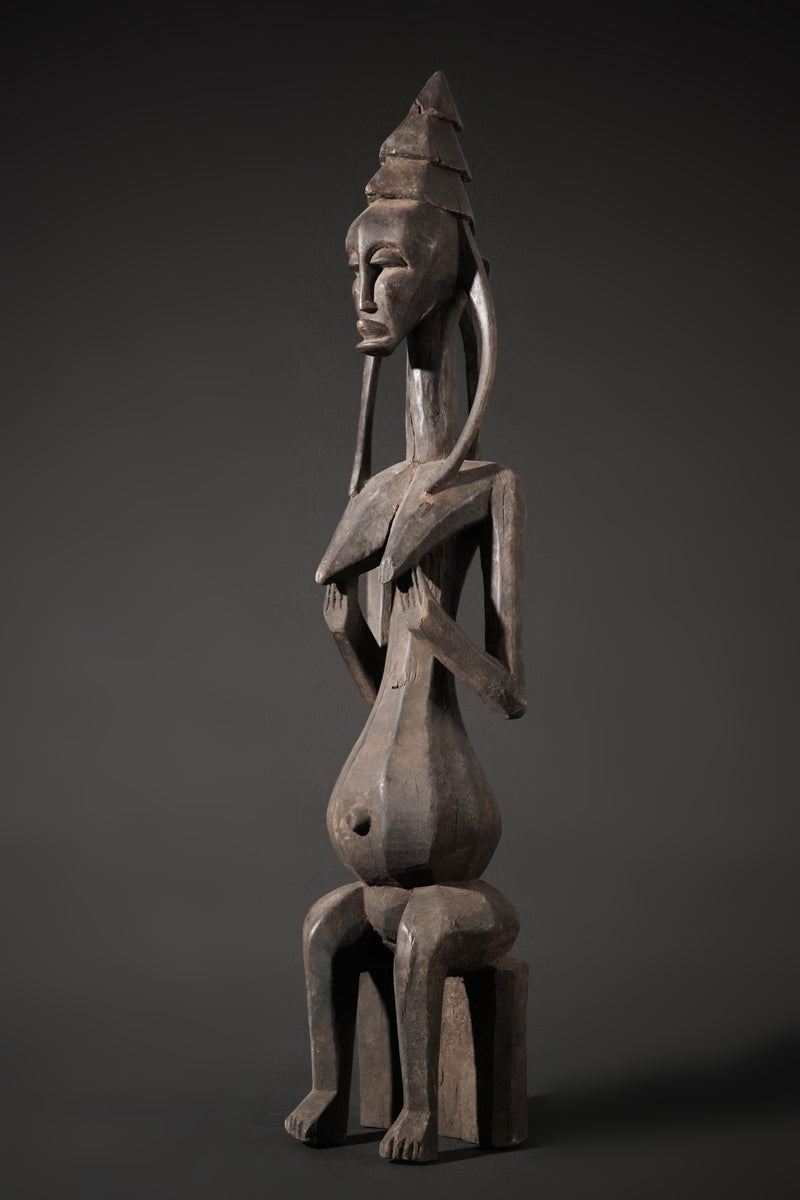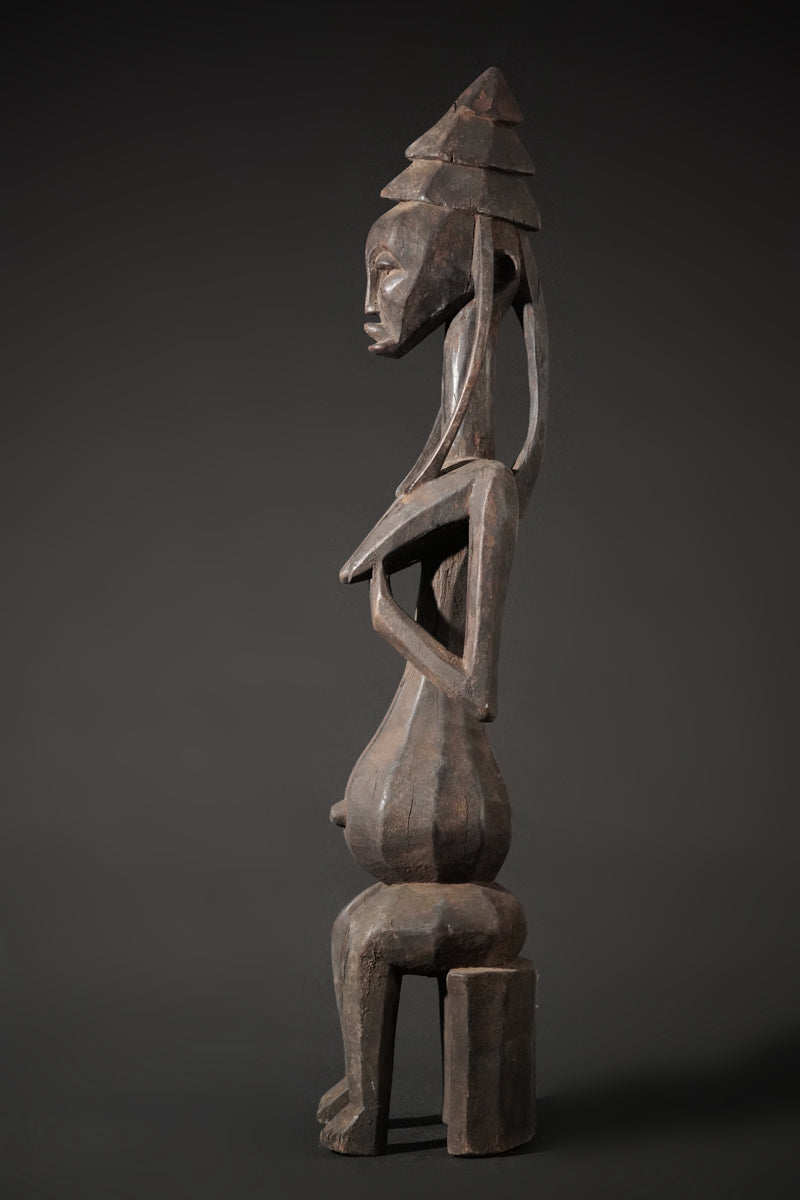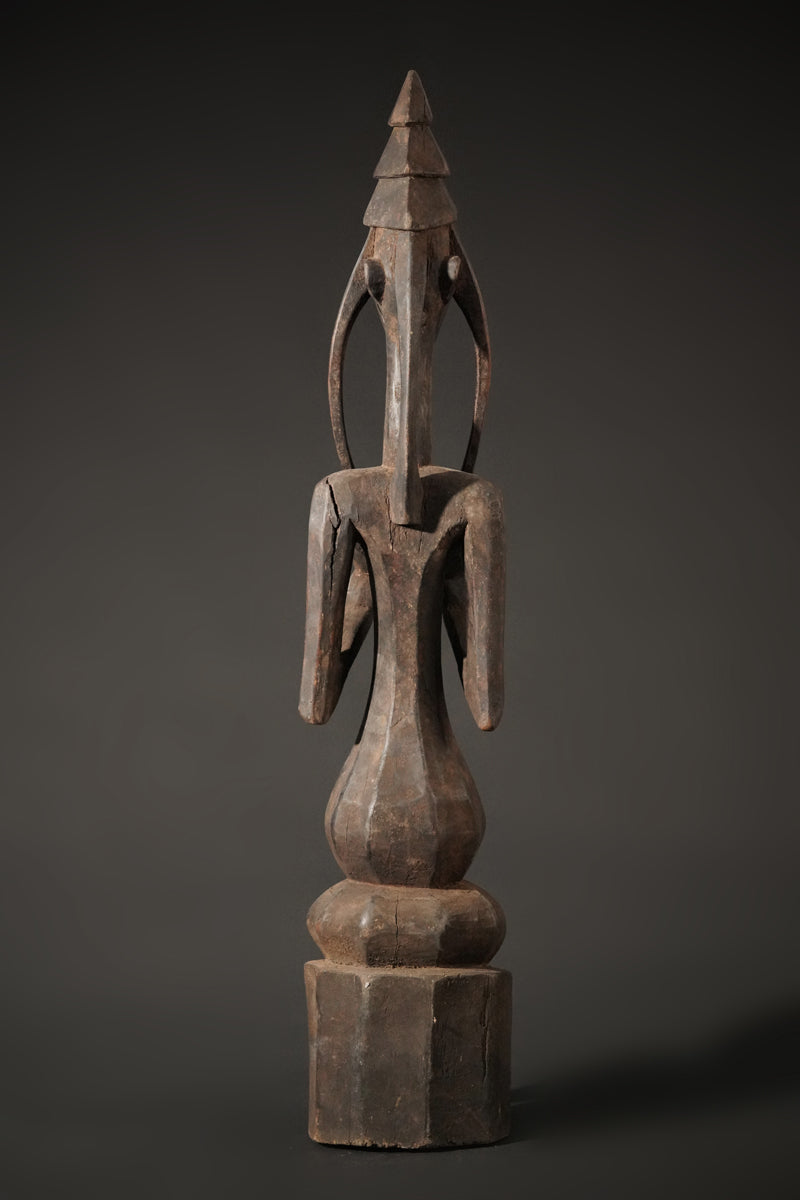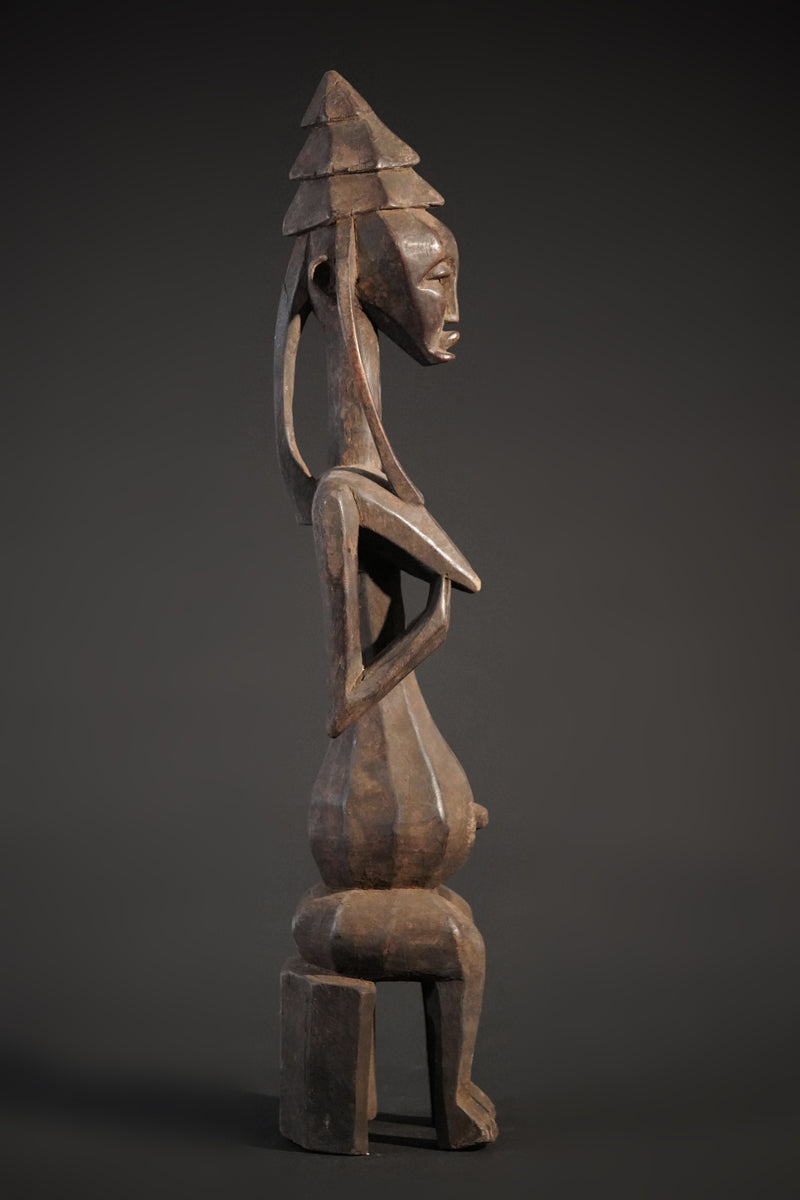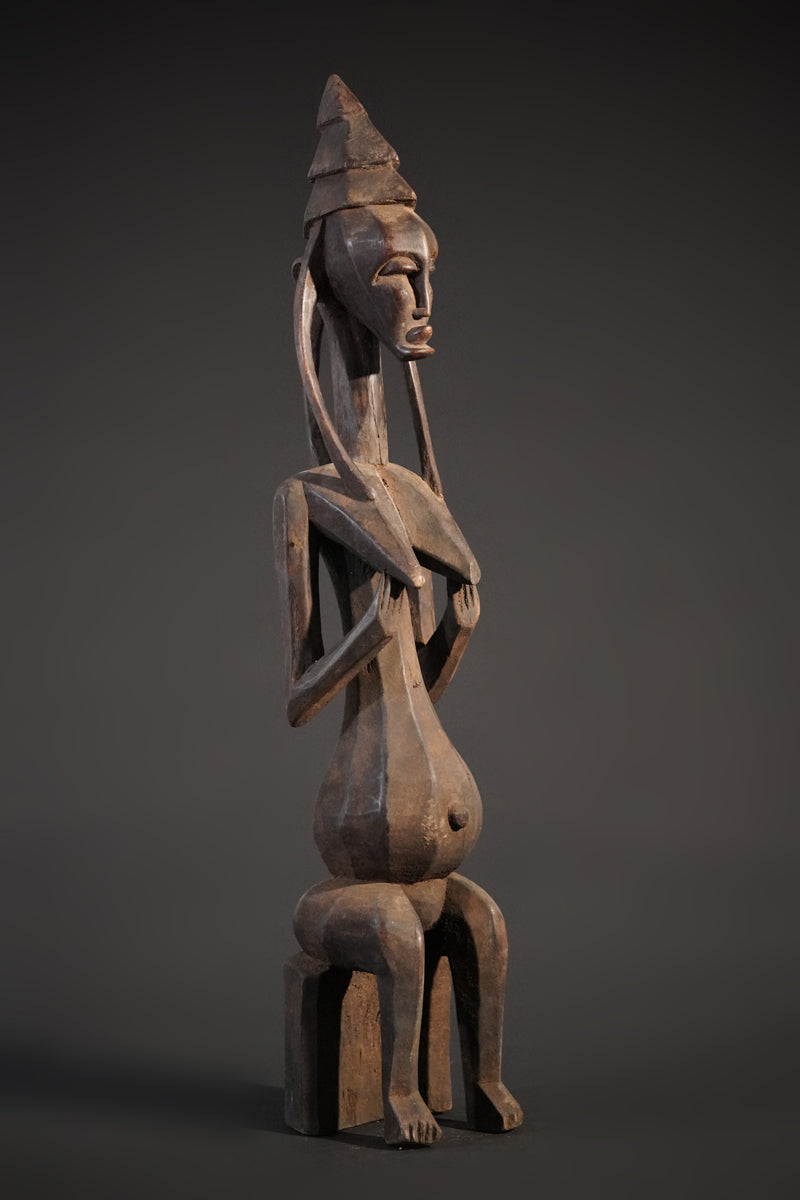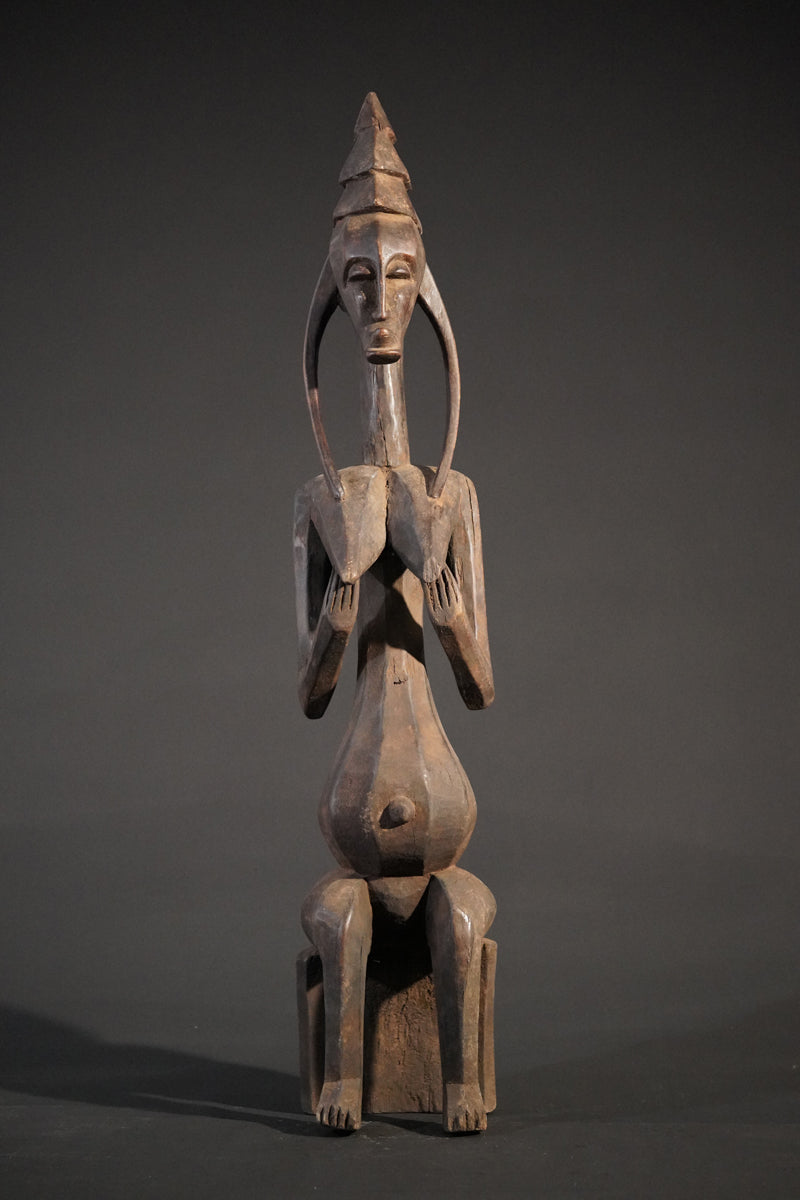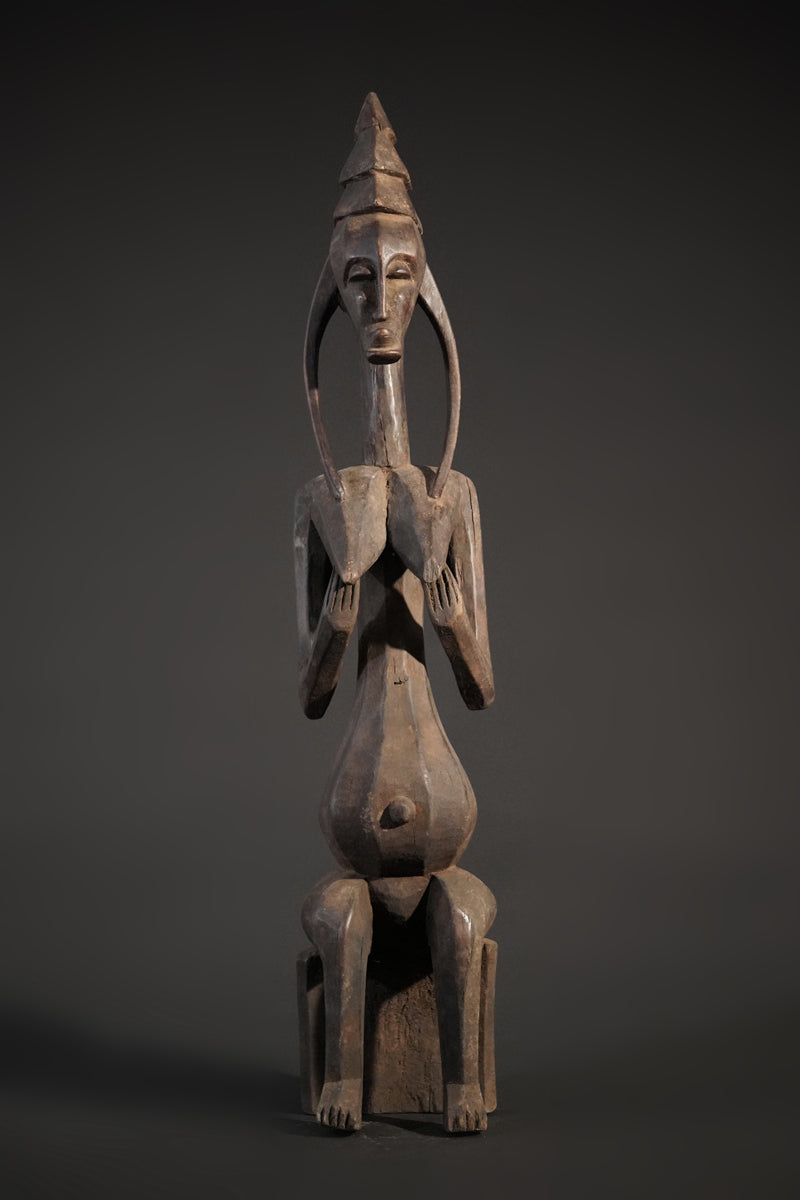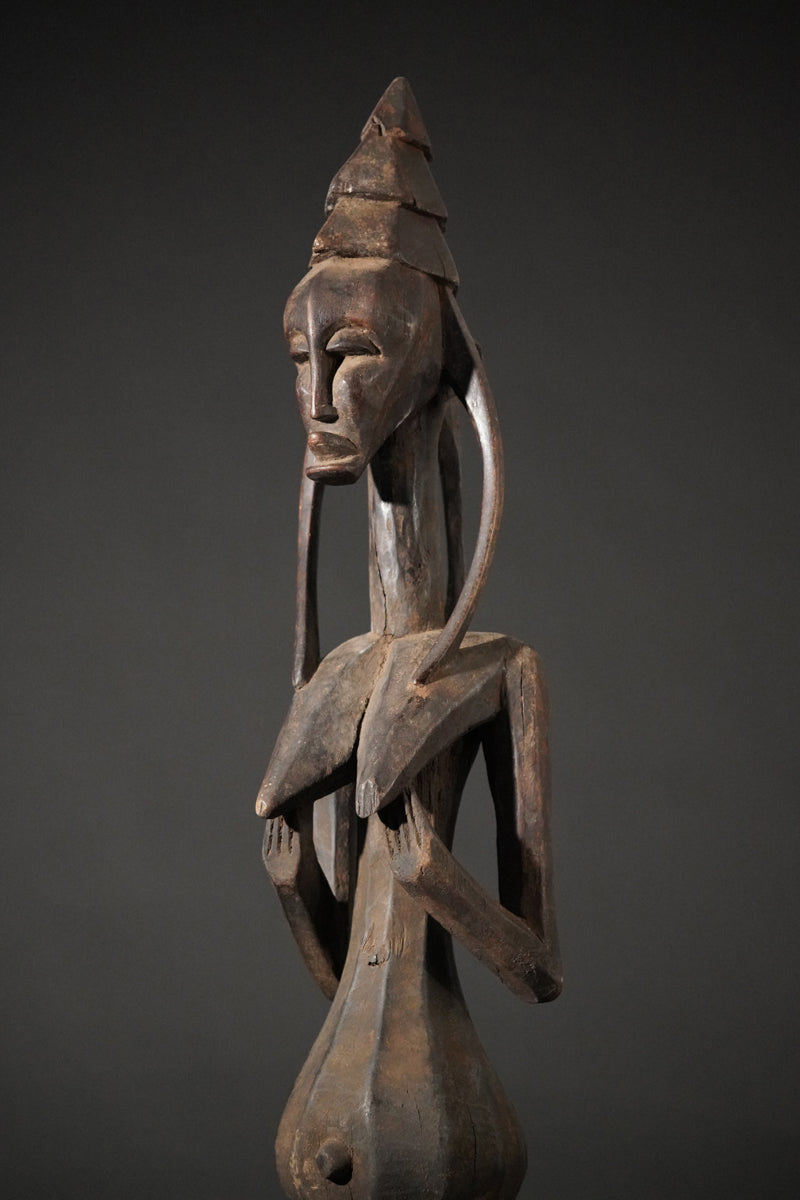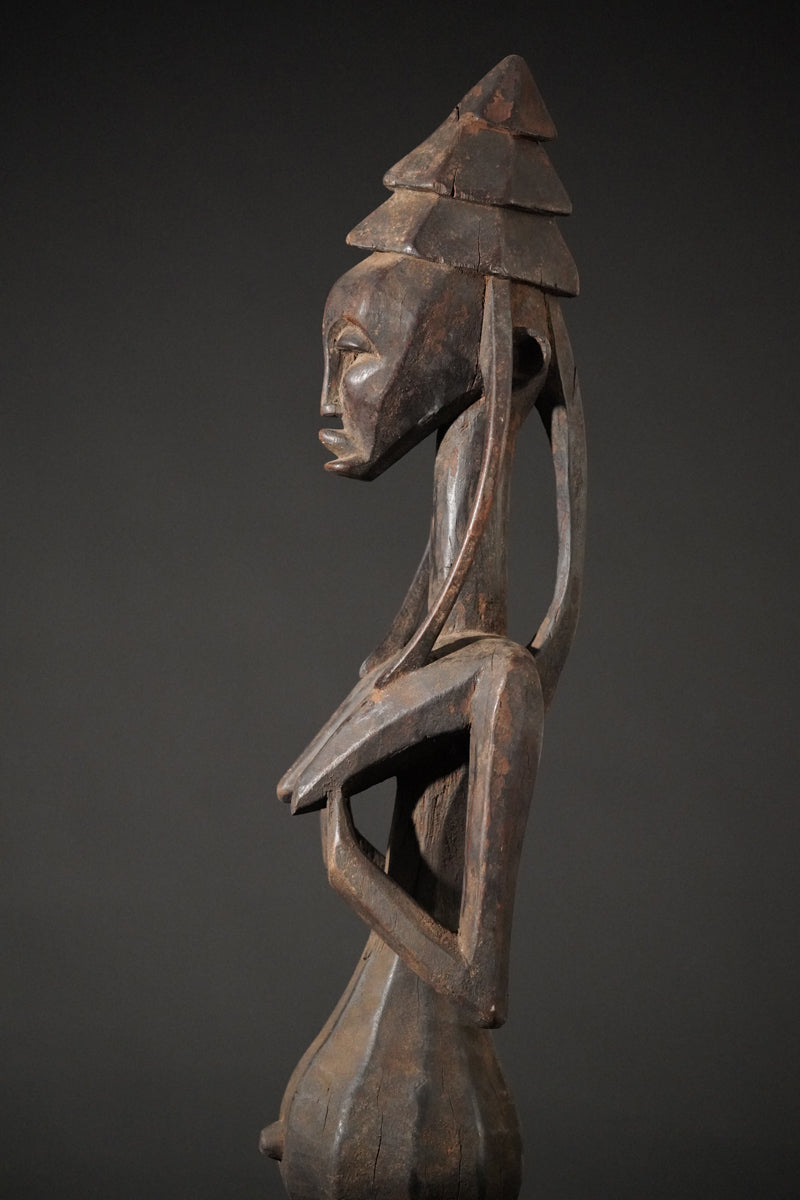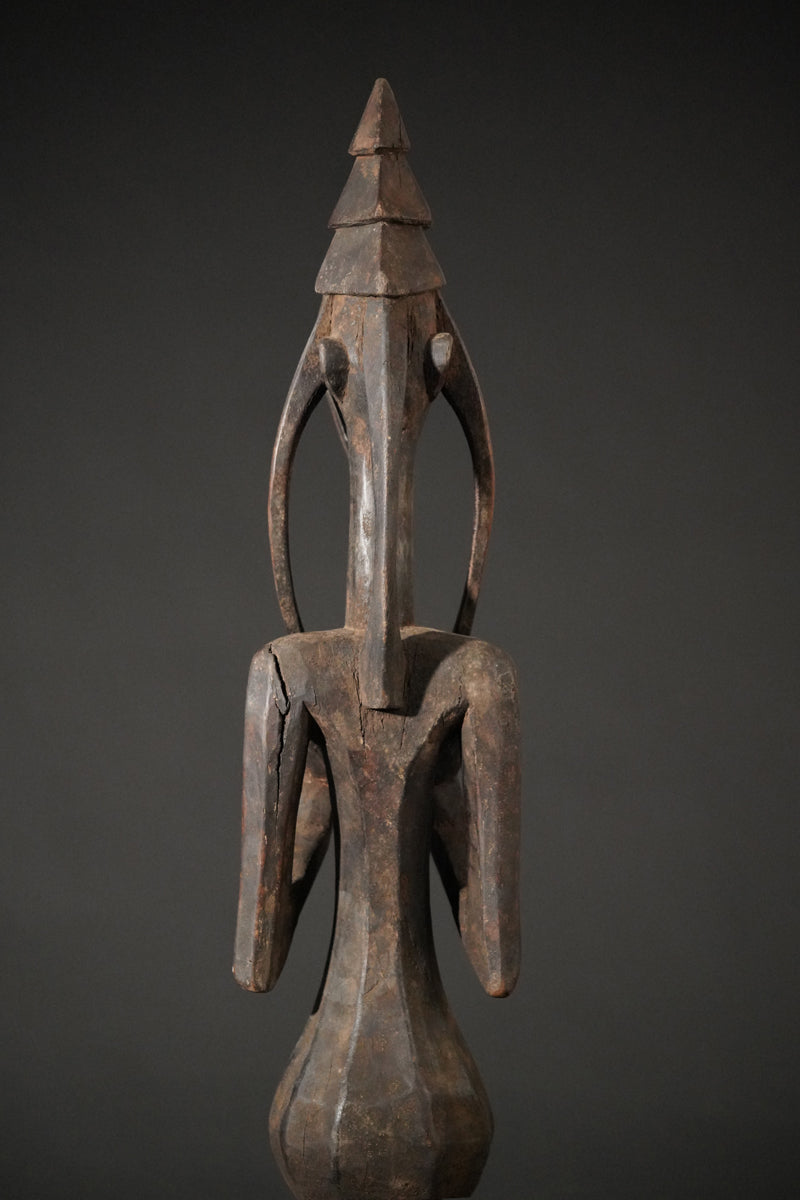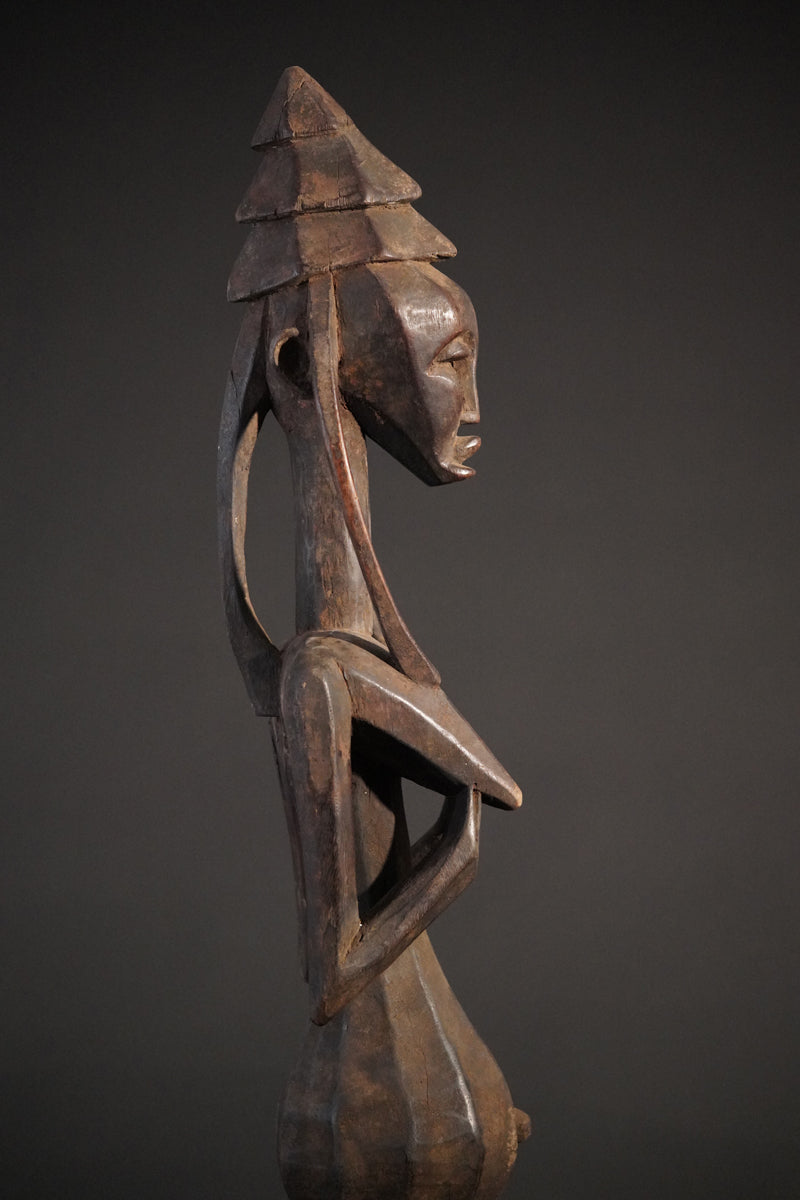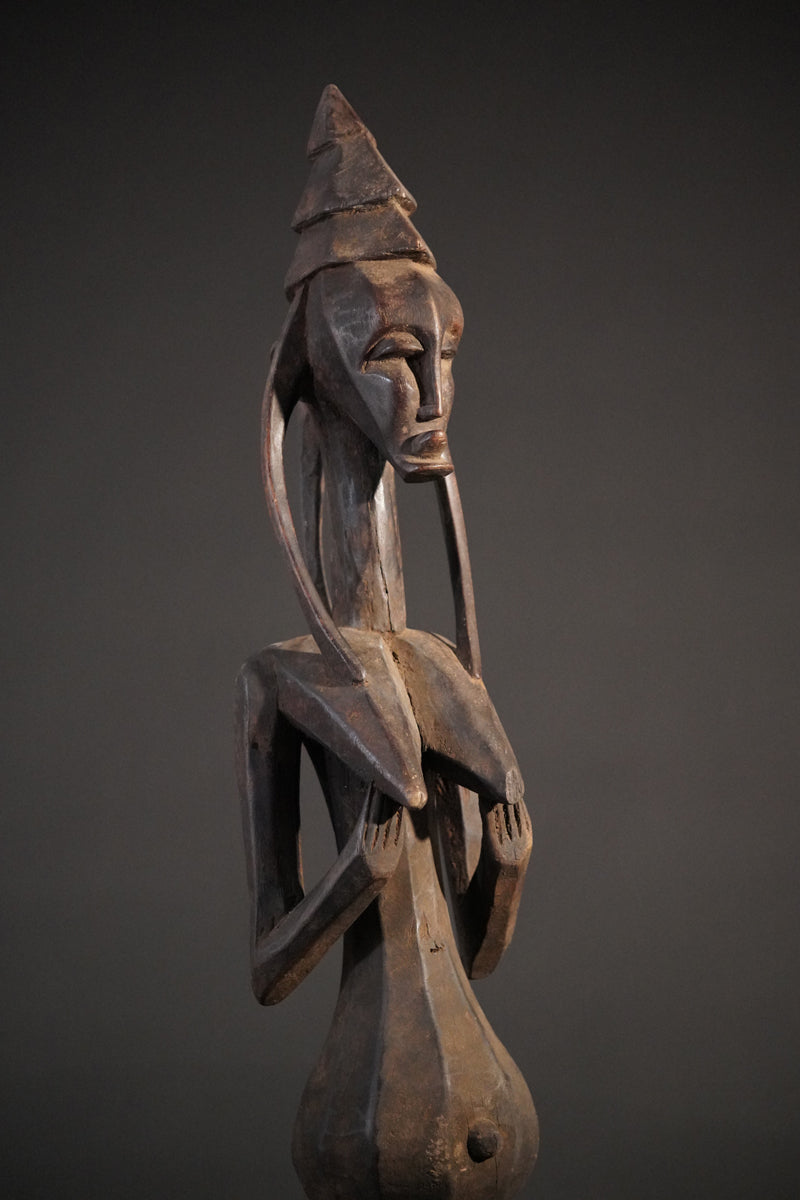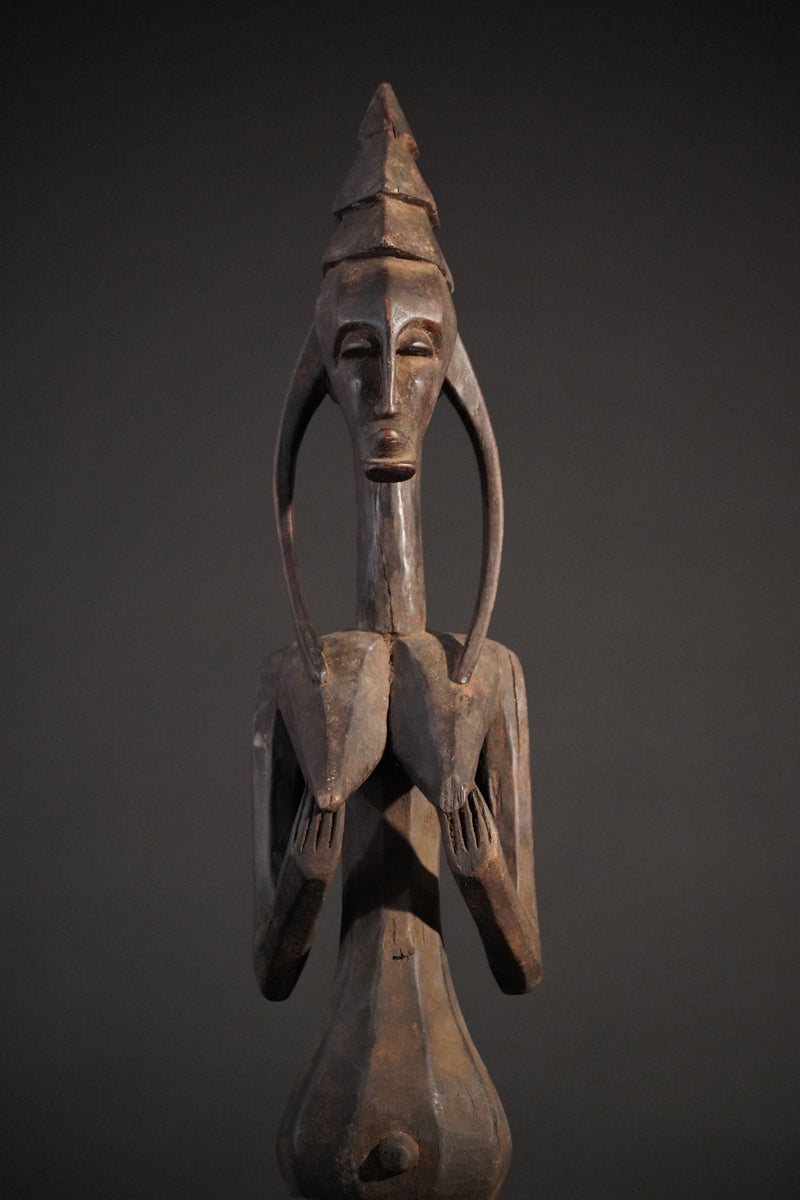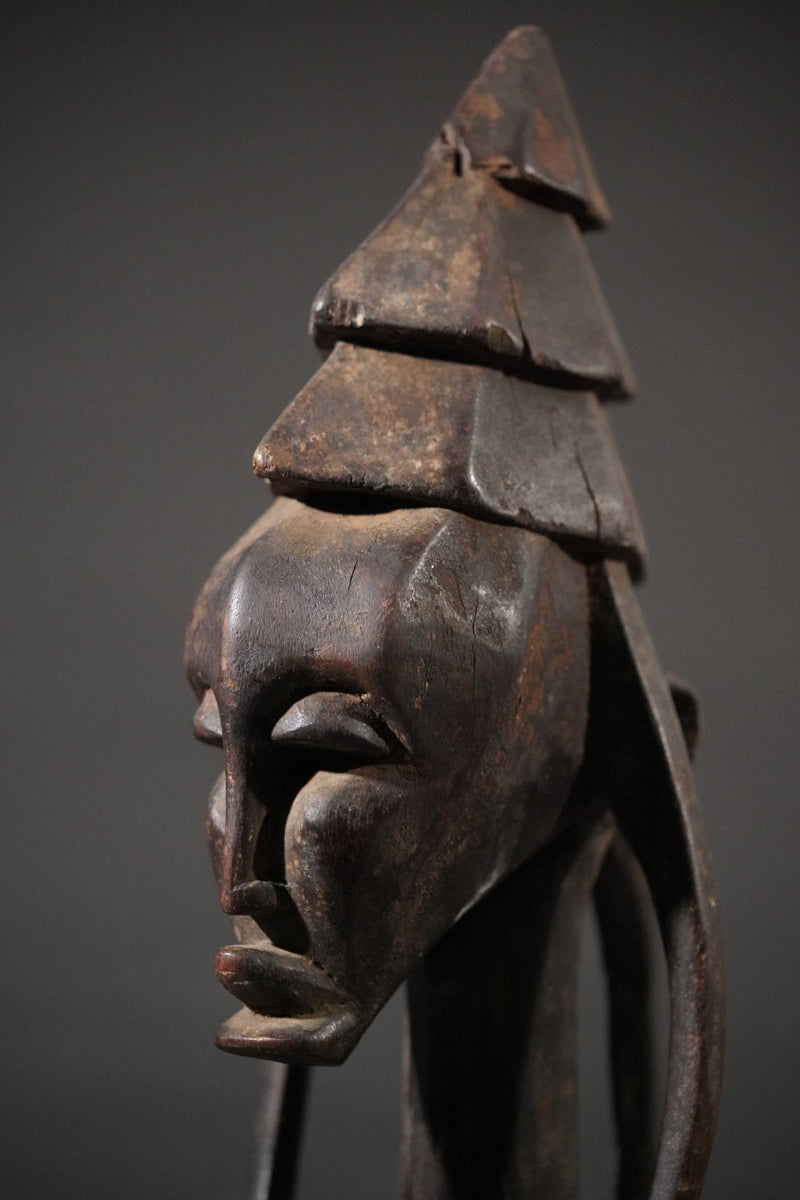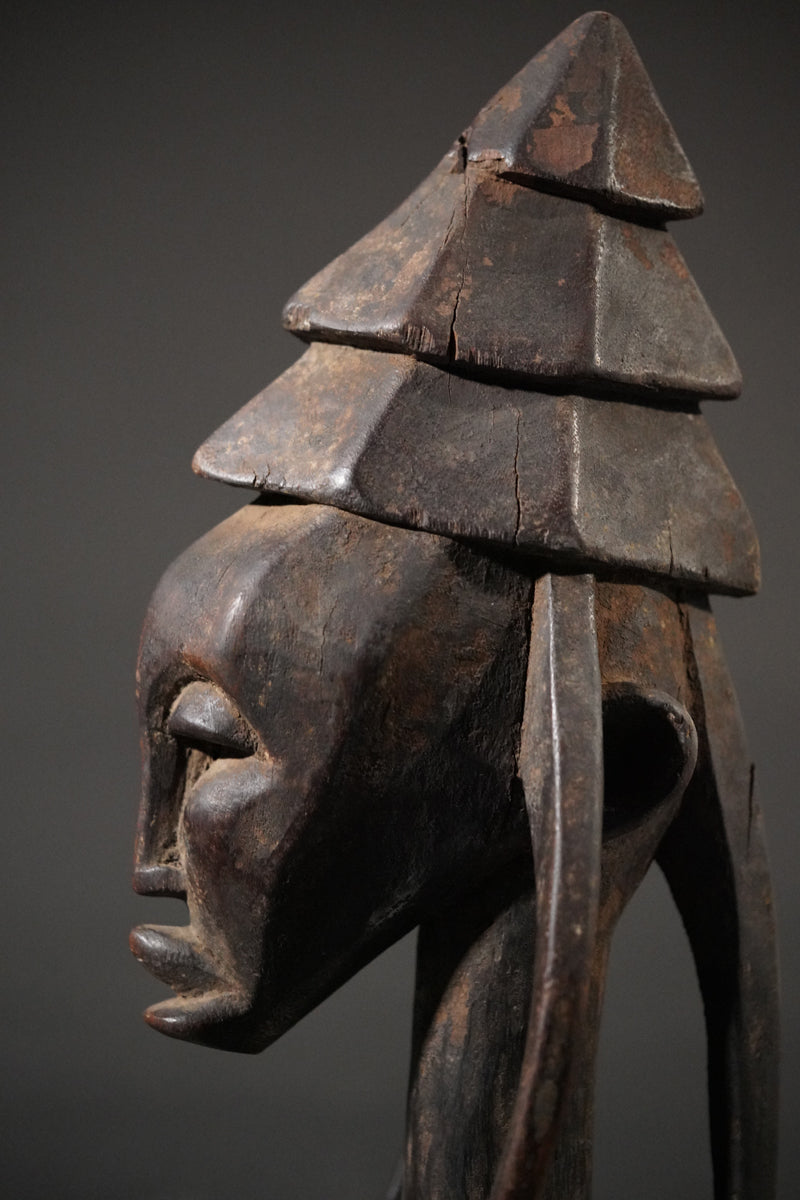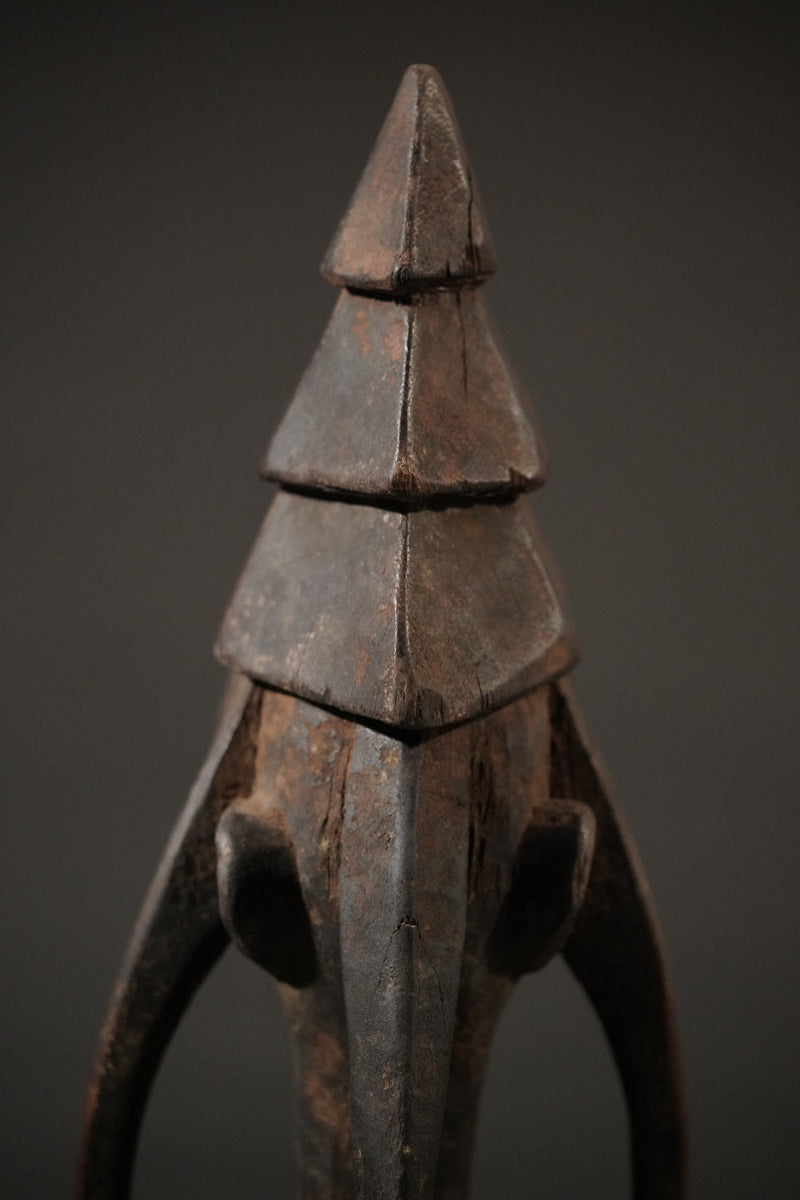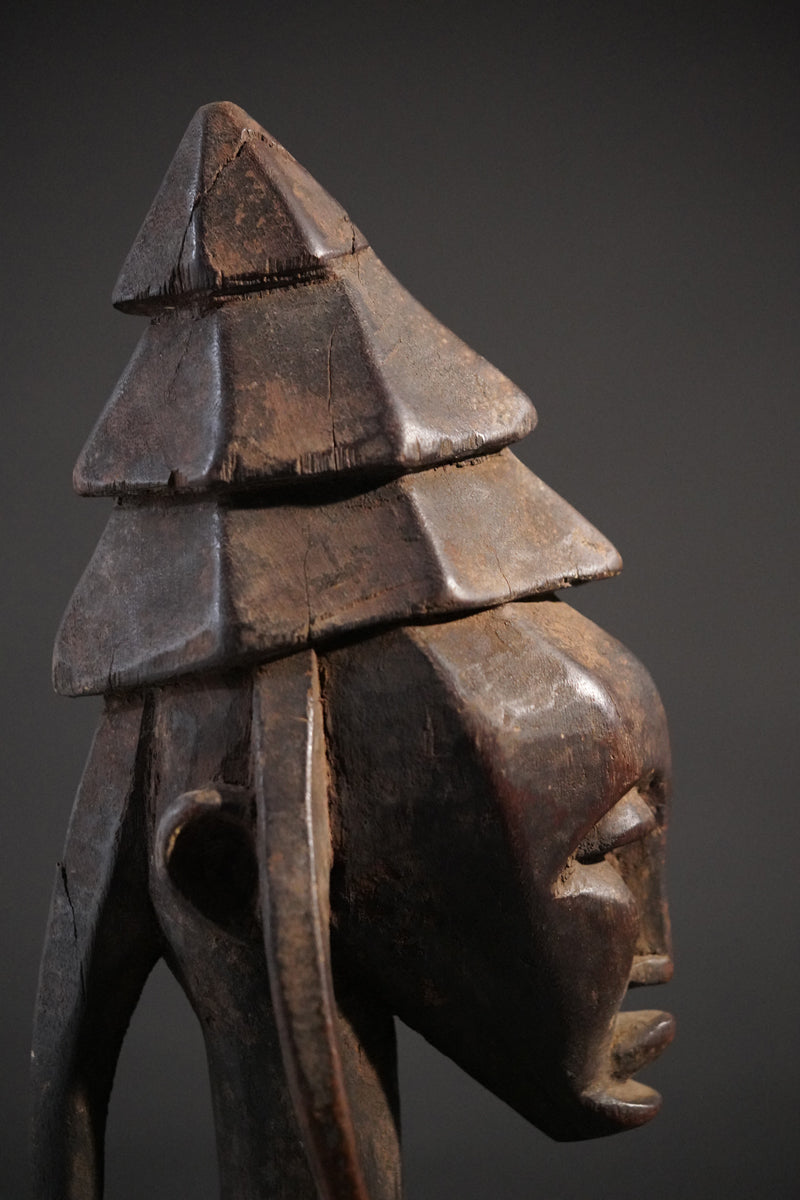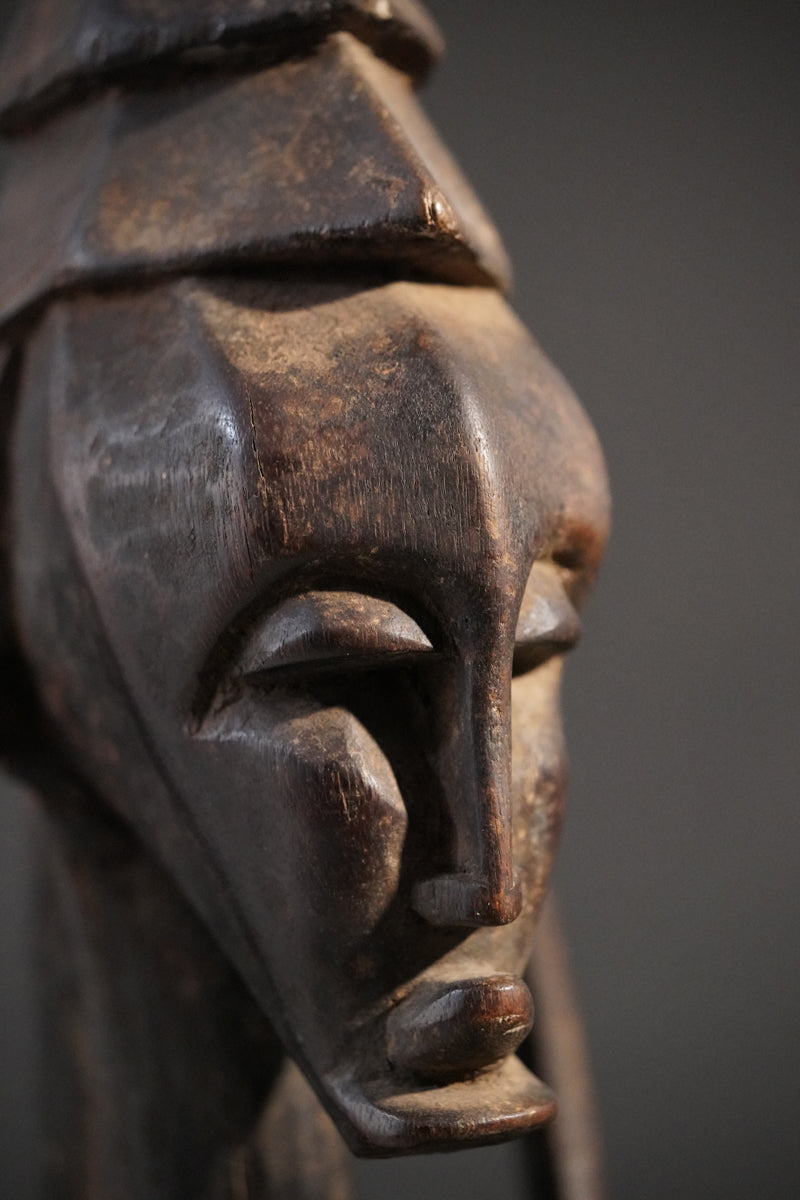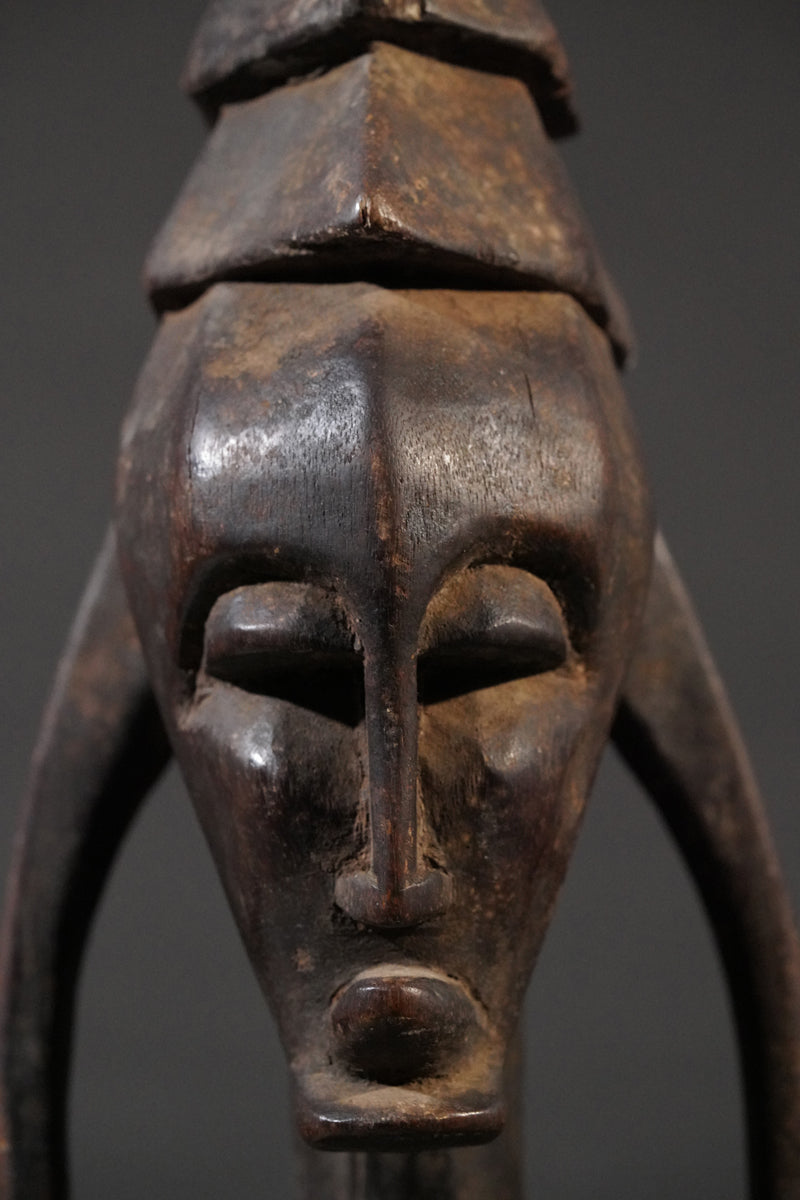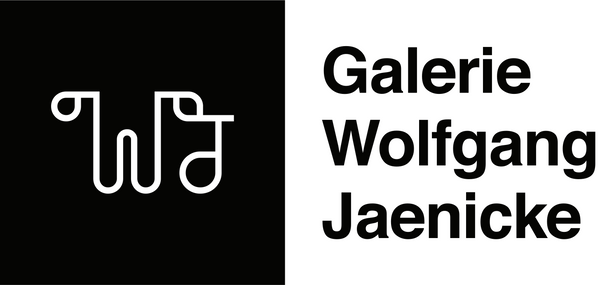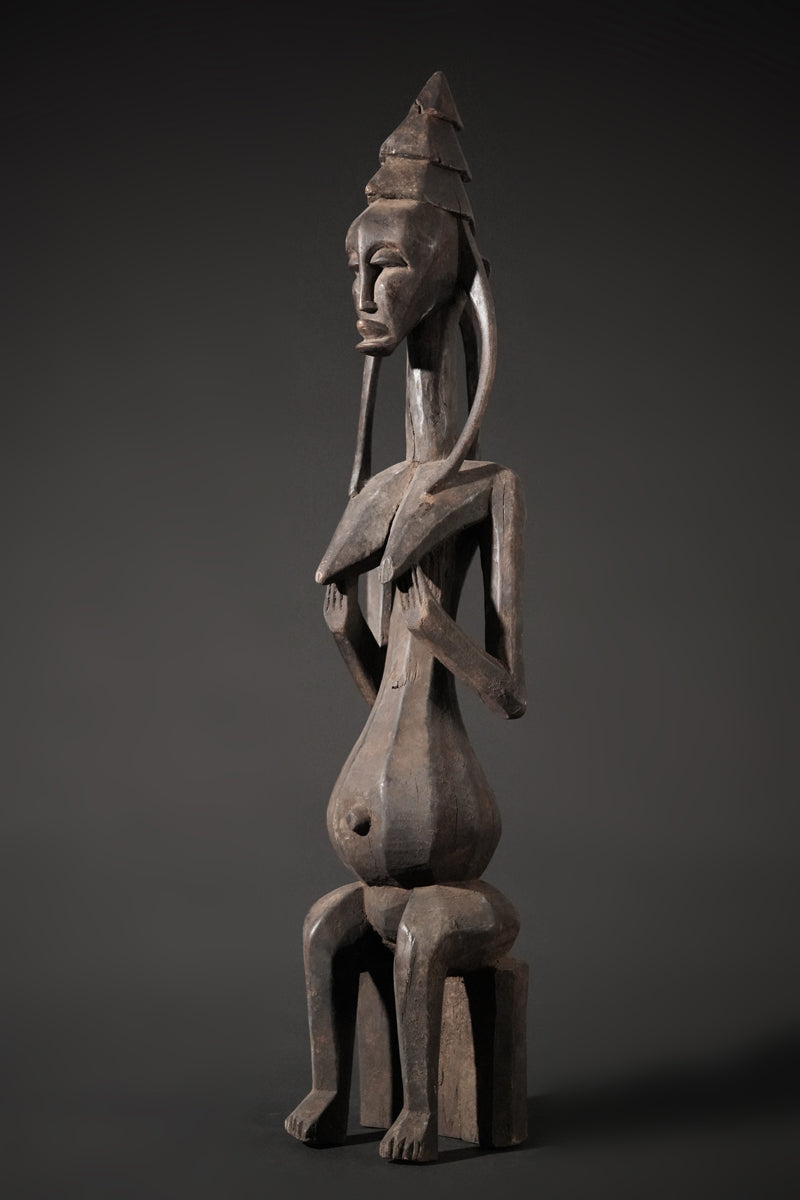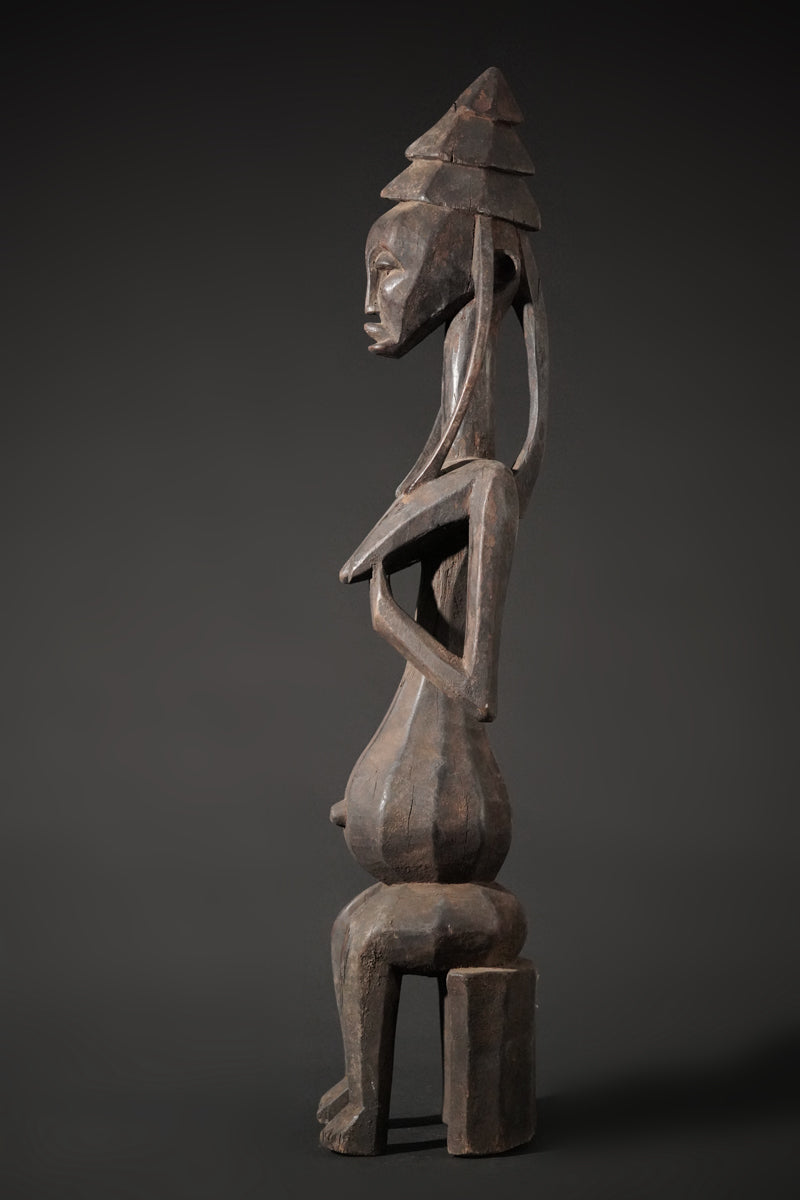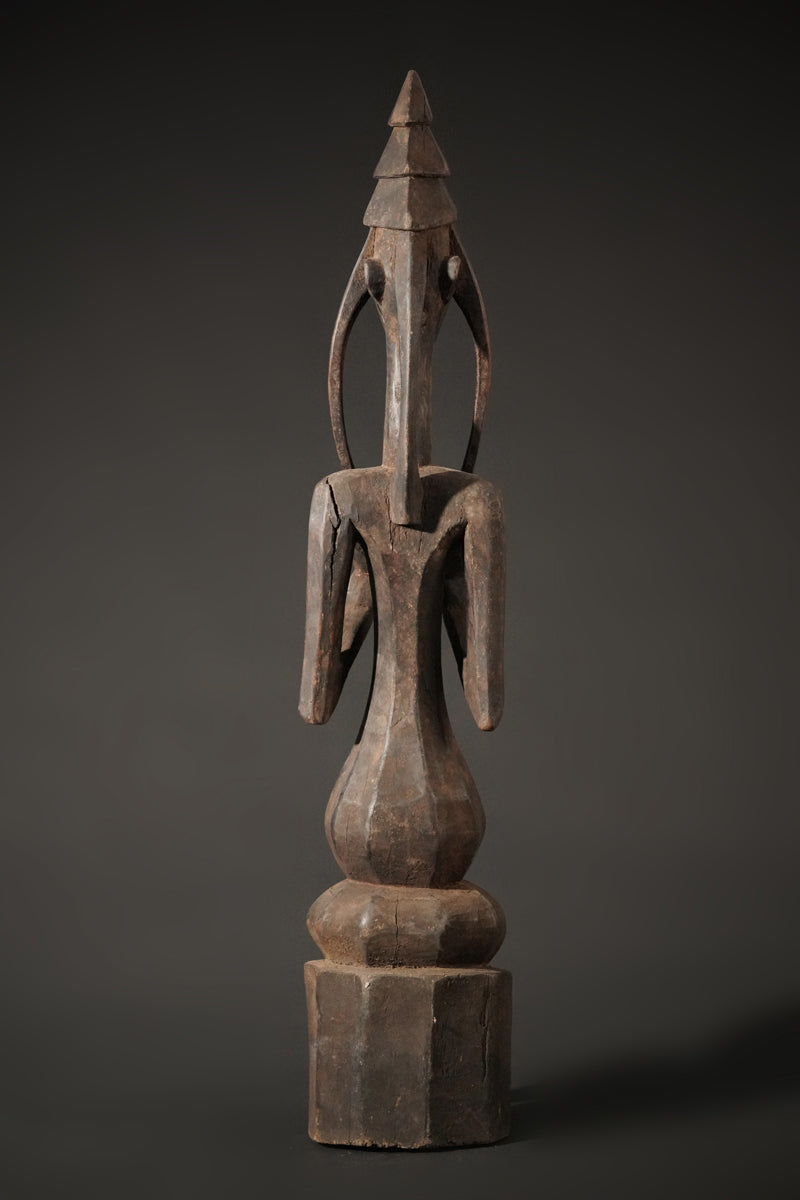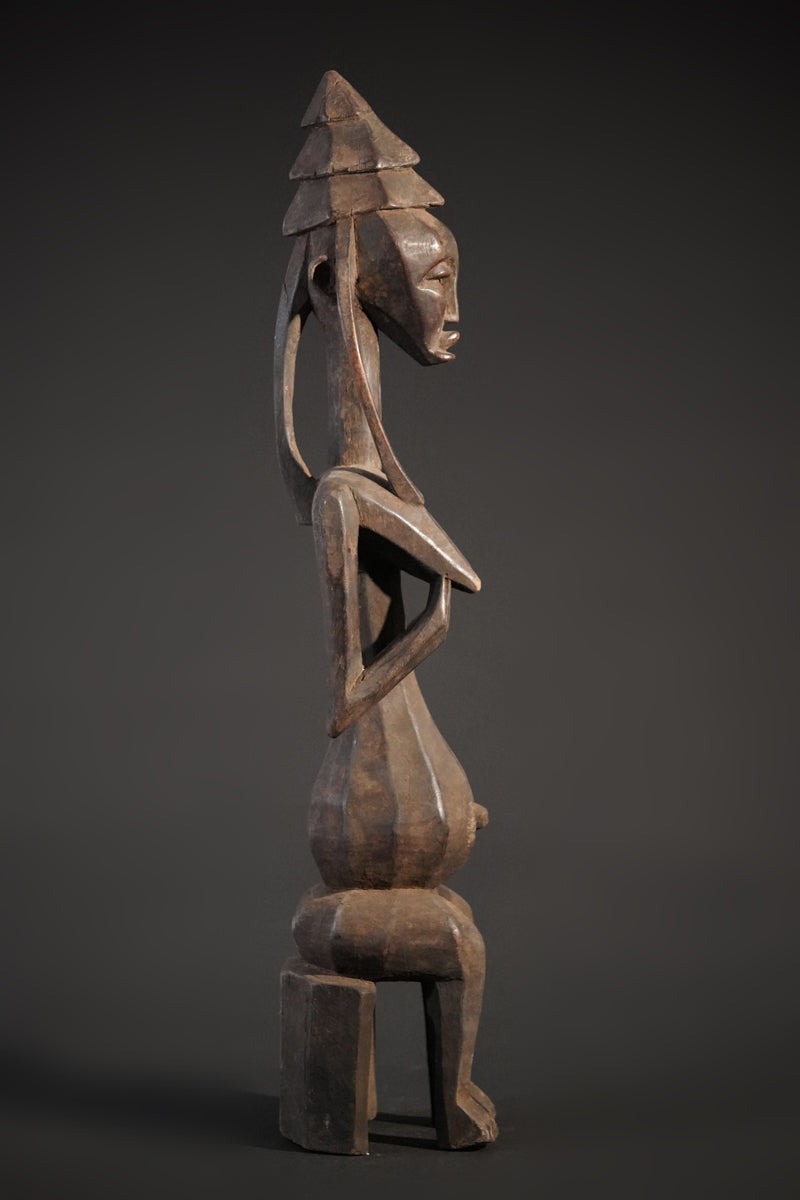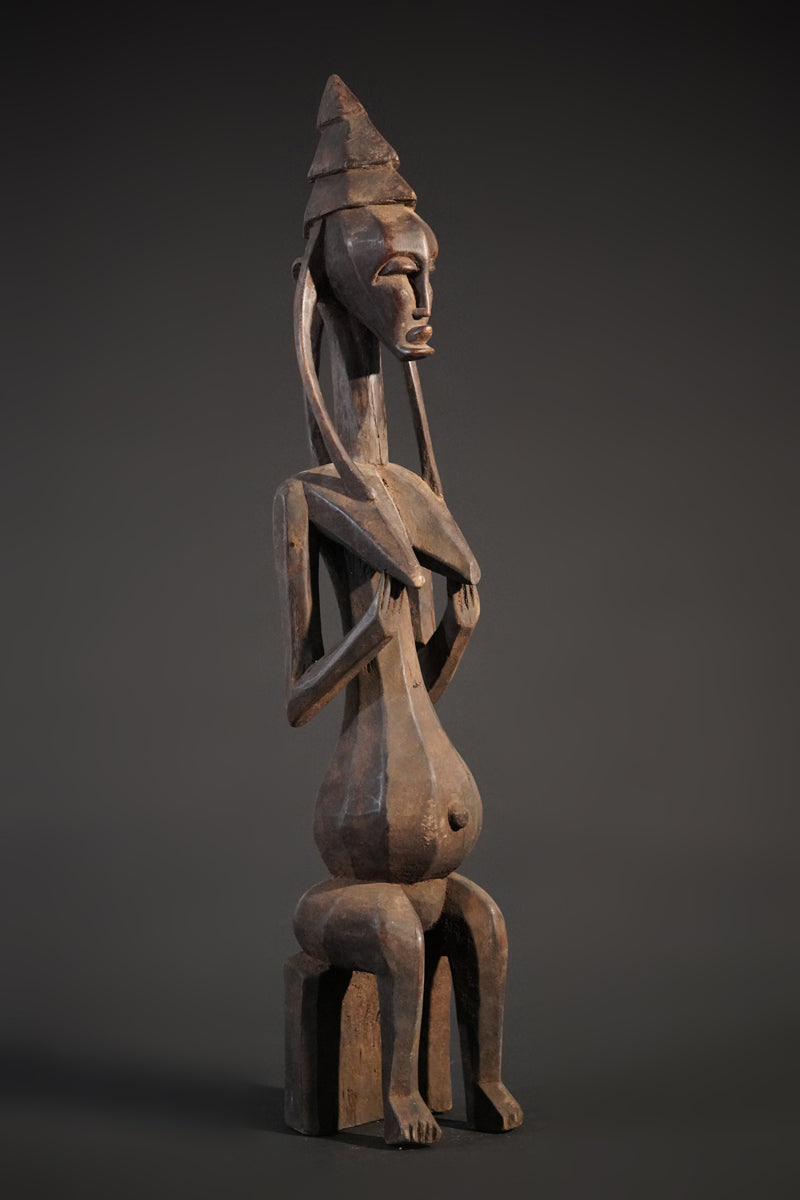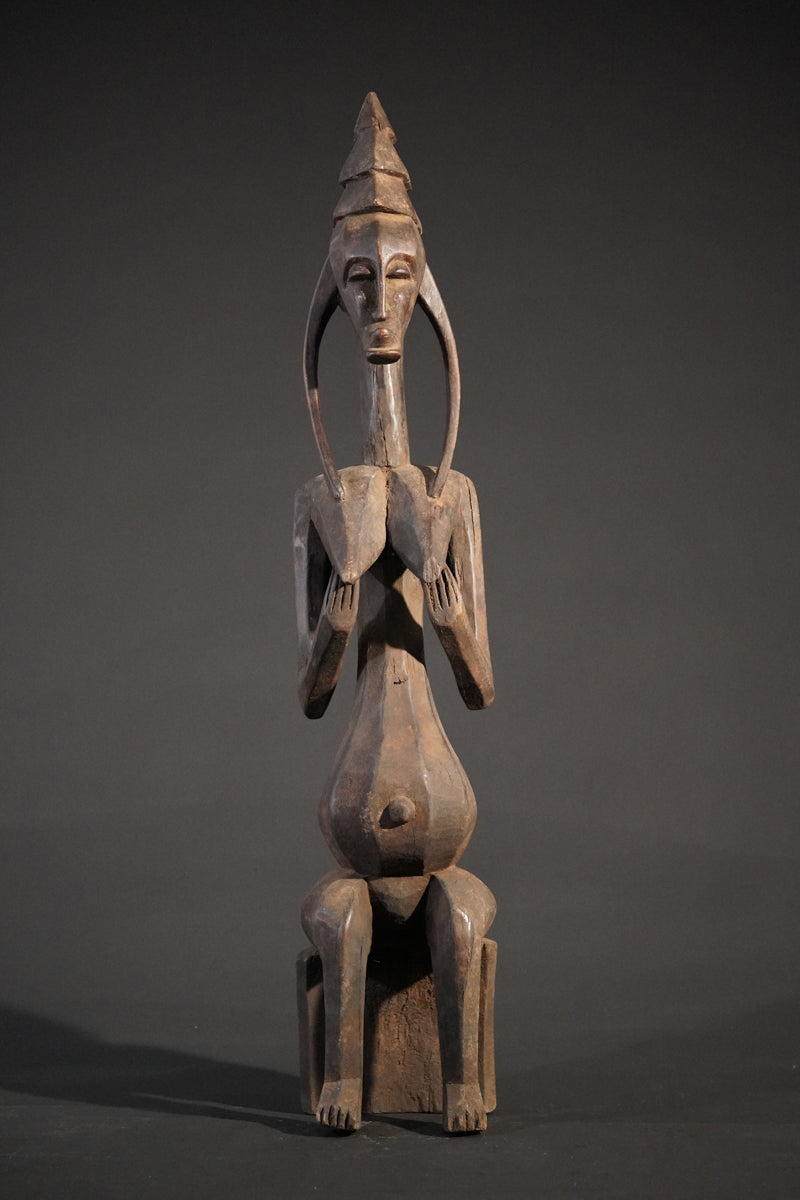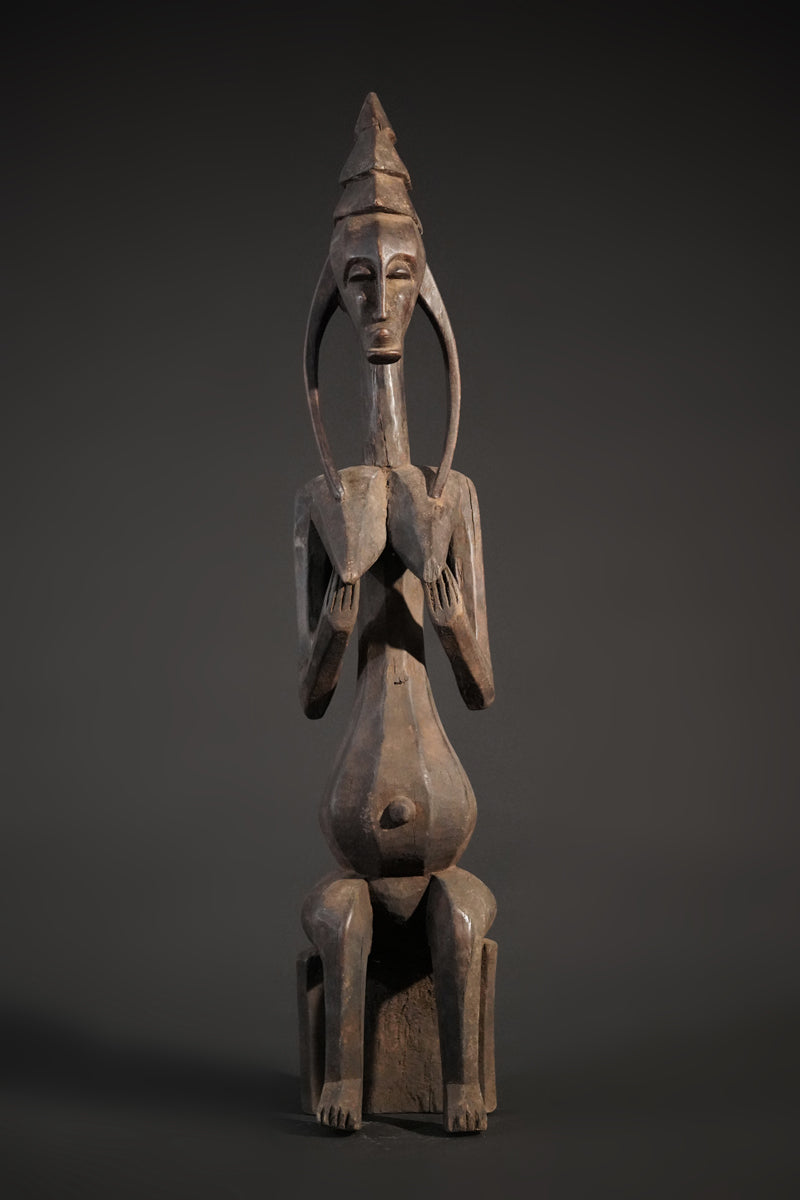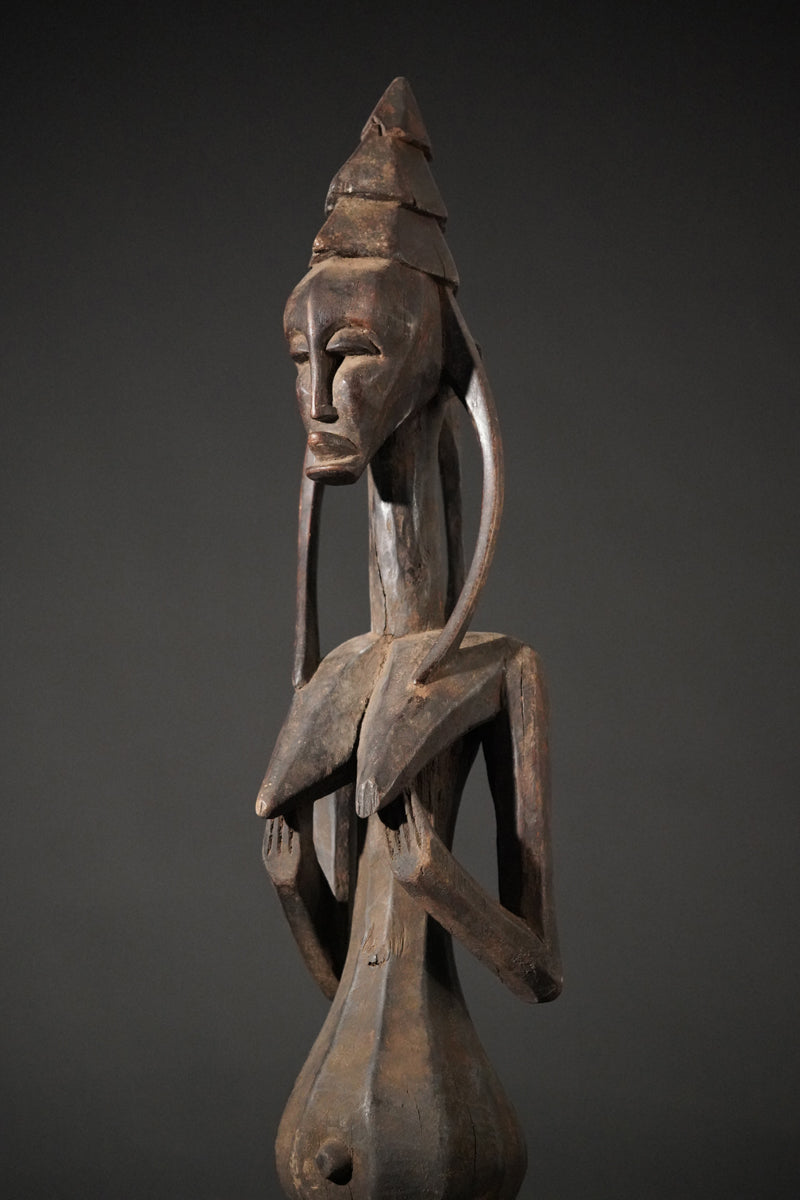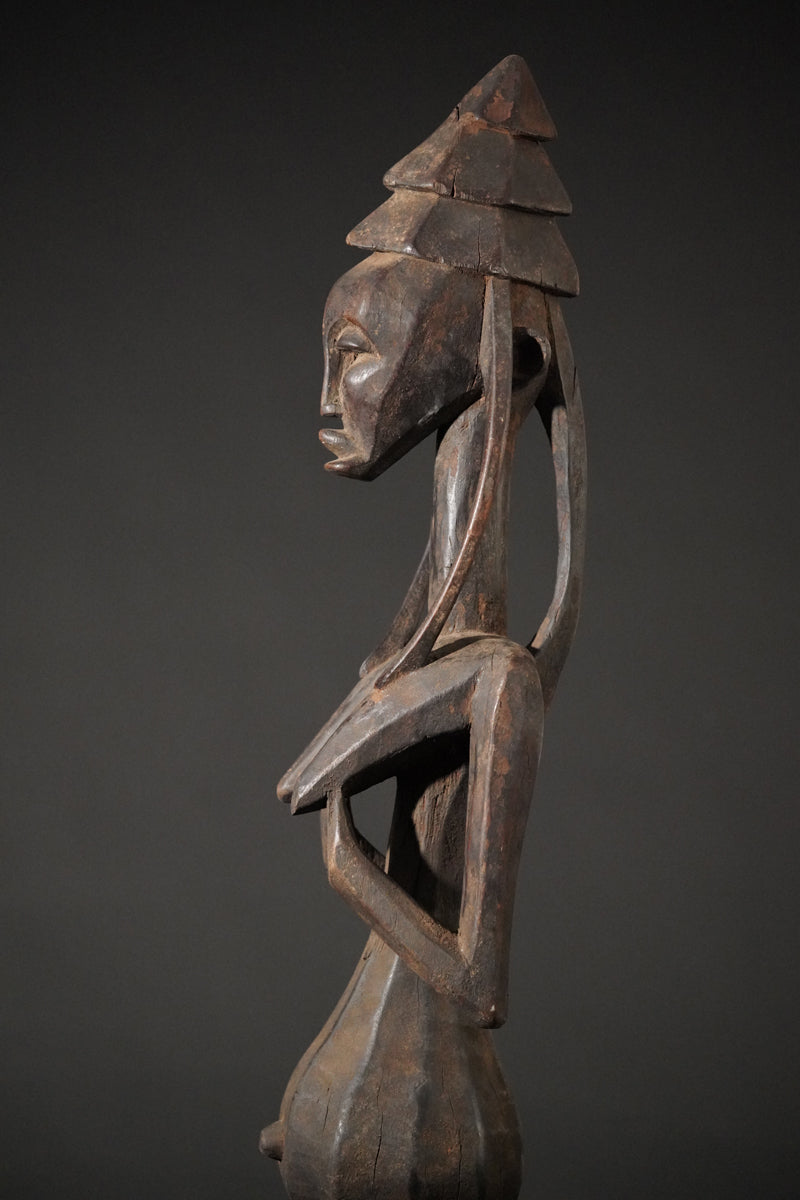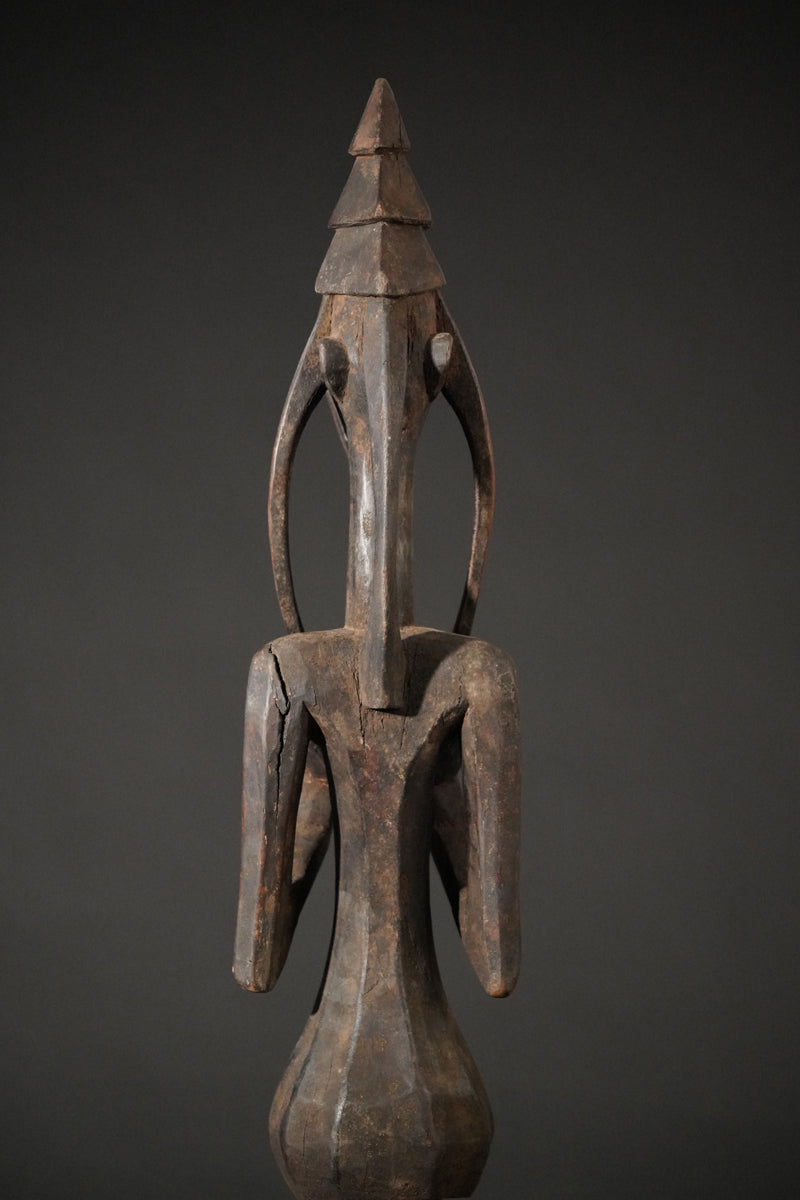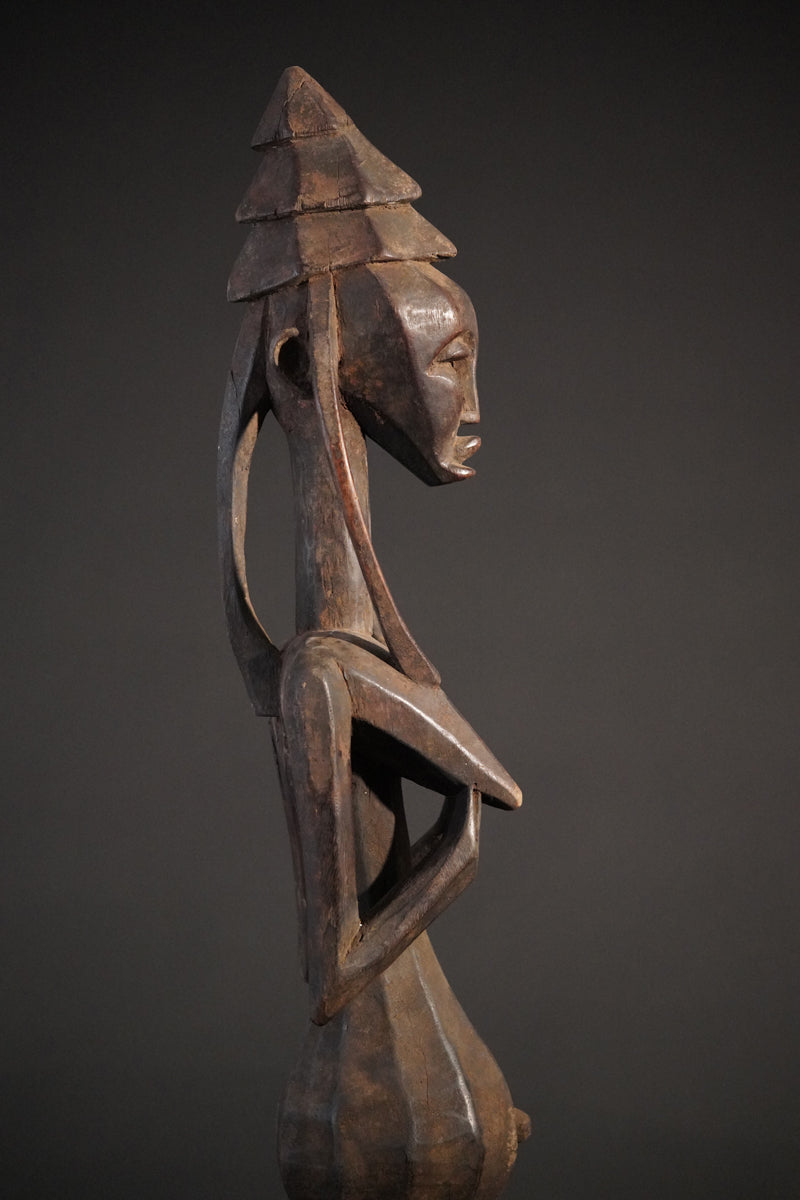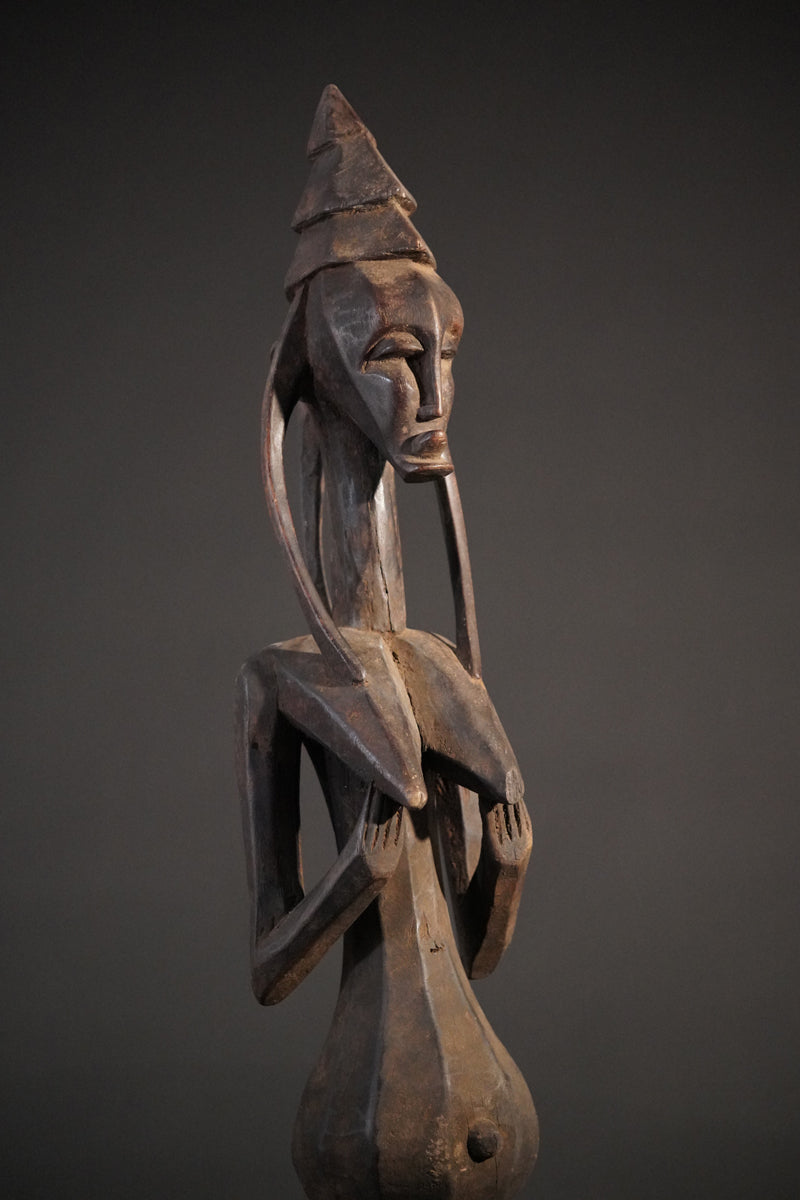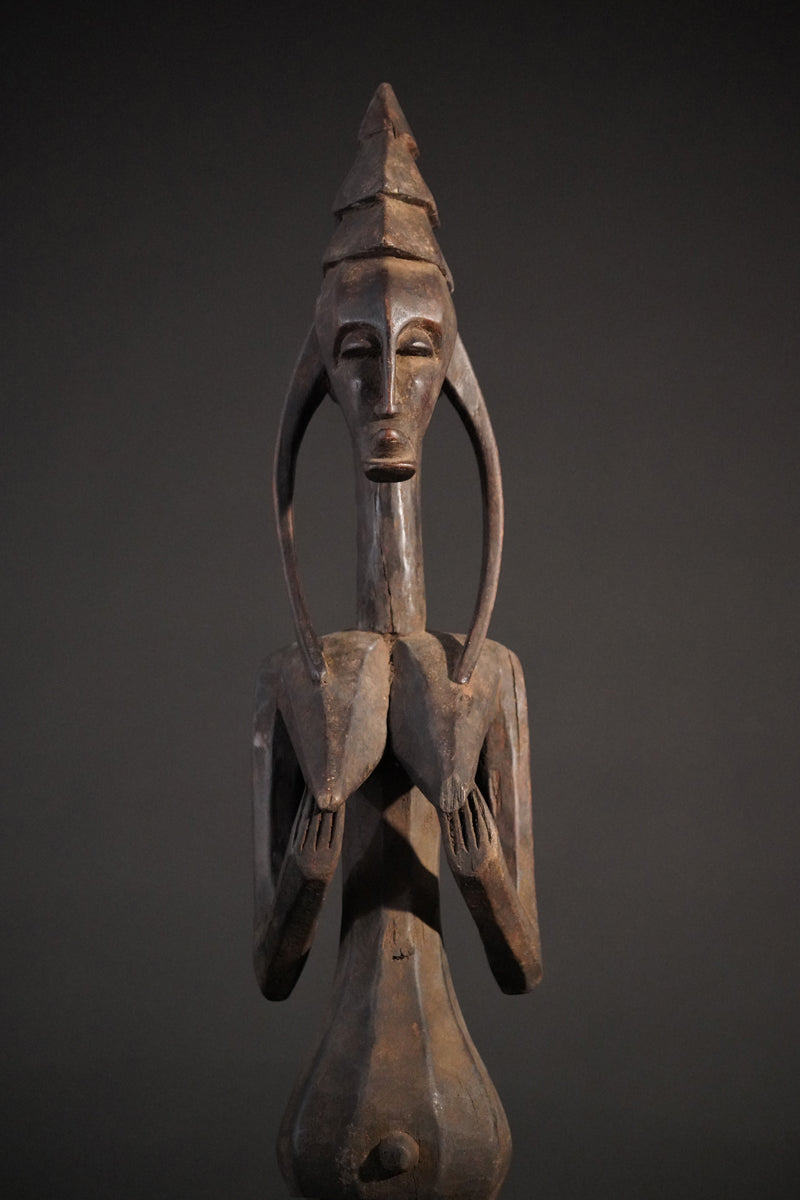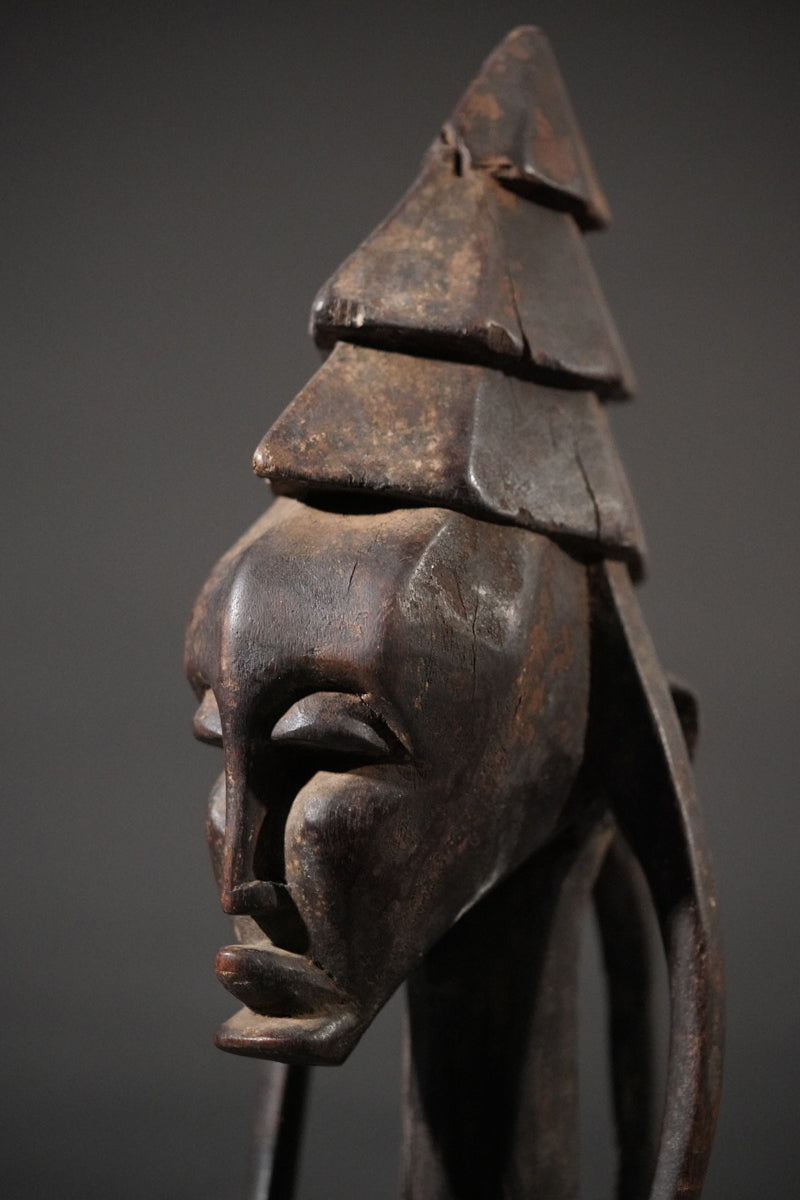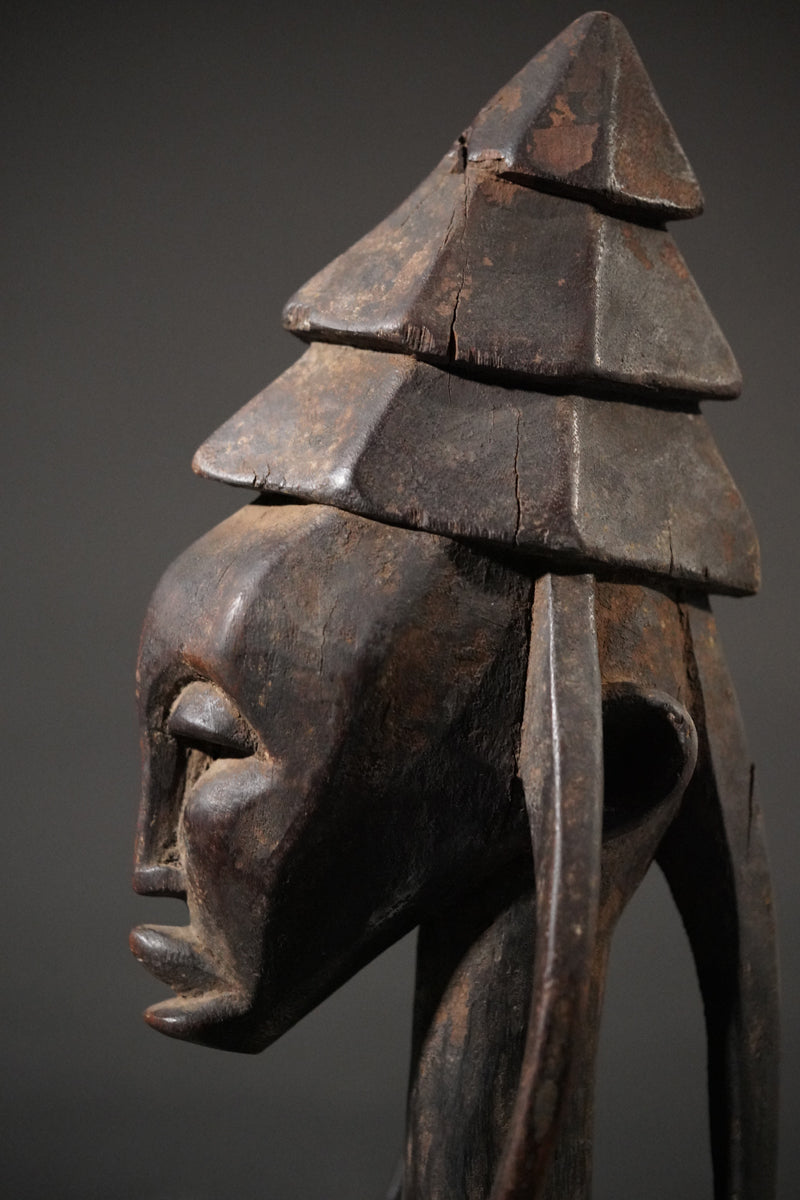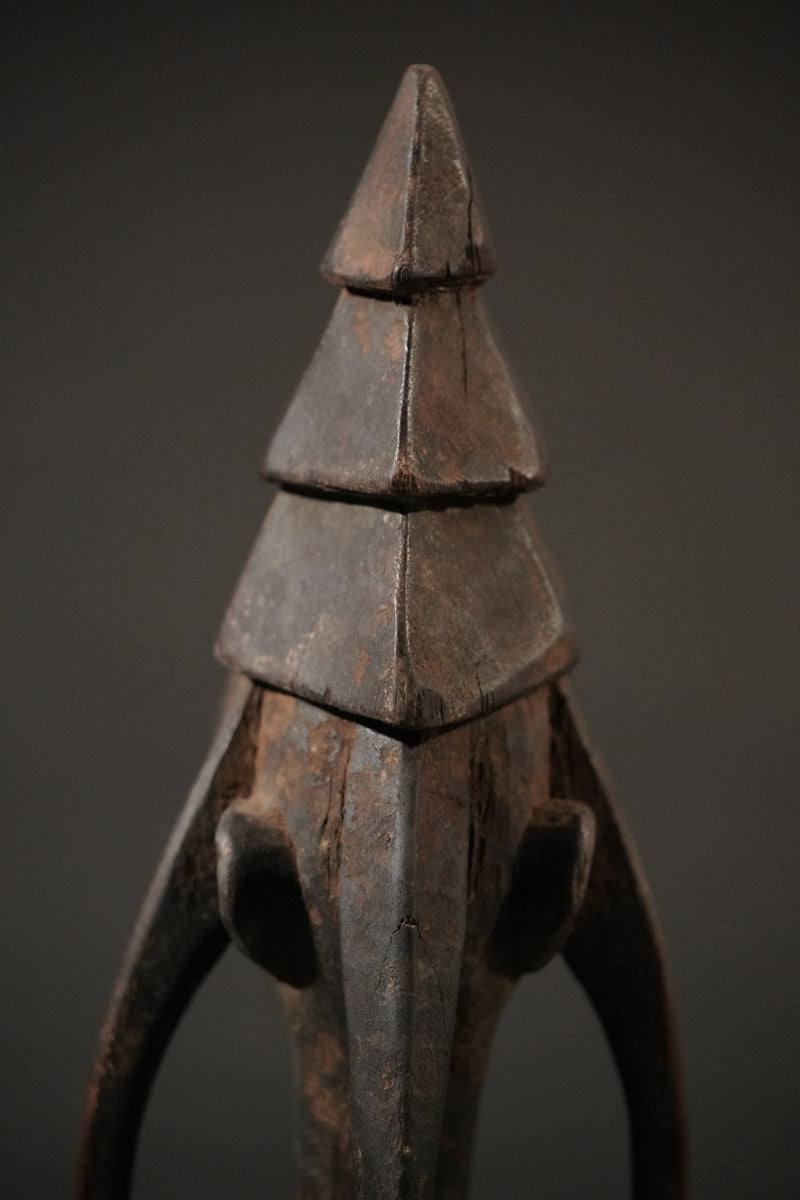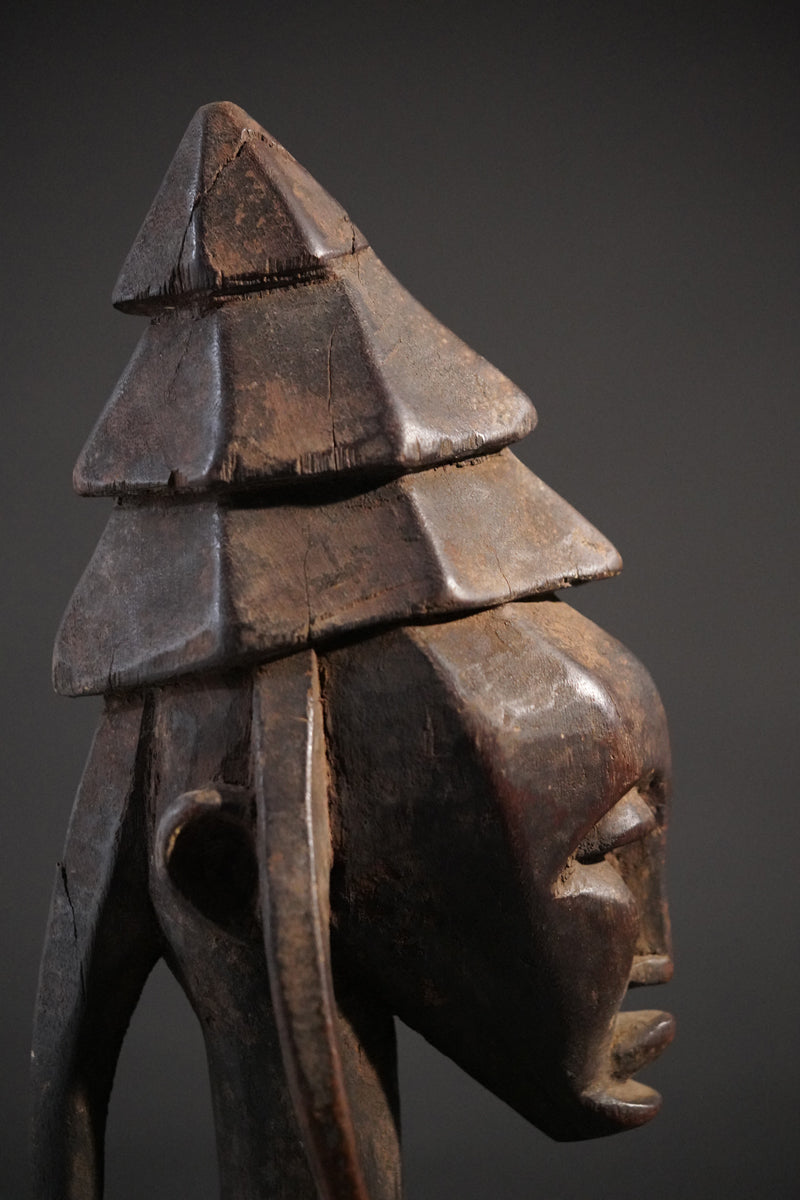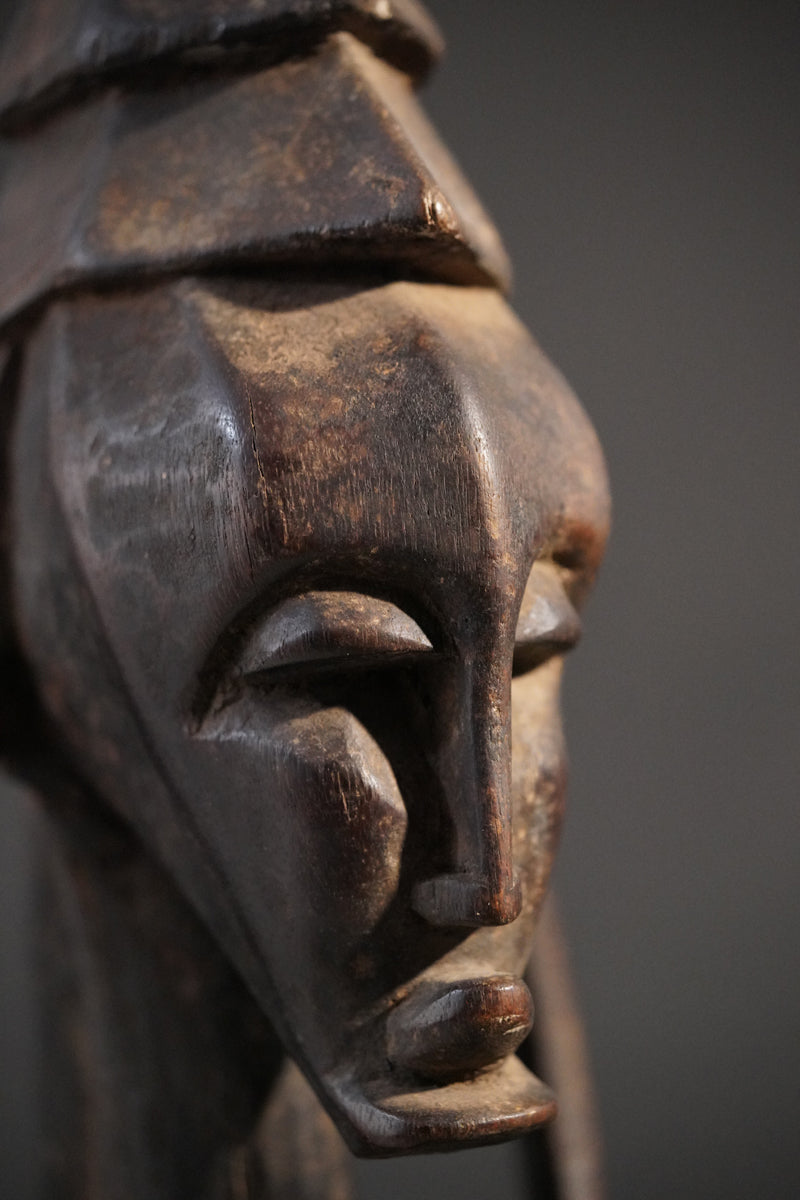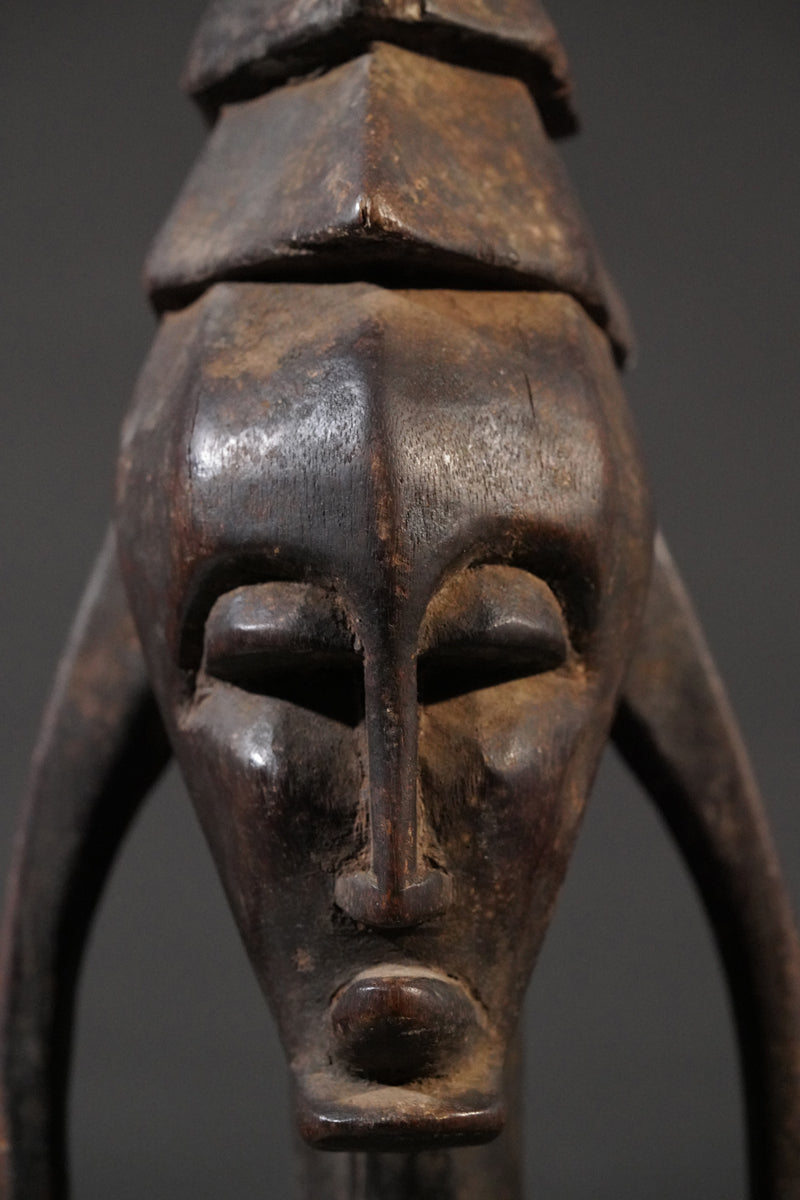wolfgang-jaenicke
A Bamana Gwandusu Araba seated
A Bamana Gwandusu Araba seated
Couldn't load pickup availability
A Bamana Gwandusu Araba seated on a one-leg stool, the hands touching the hanging, curved breasts, probably an early work of a carver is called "Fana" or of his workshop. This figure already shows all elements of the legendary Gwandusu Araba with its style reminiscent of crystals. But in contrast to the late work of the artist Fana, this sculpture does not yet have the high degree of abstraction that we know from his late work. In addition to the specimen we collected in 2011, we only know of one specimen from the late work of similar quality in the Hartmut Zimmer Collection, Saarbrücken. Even if parts of the figure have not yet been fully stylistically developed, essential elements of the crystalline design language are already recognisable here. Works by these carvers or those in their immediate vicinity are extremely rare and, due to their rarity, they should be among the masterpieces of Bamana art, extremely heavy hard Lenke wood.
The sculpture was collected at the Toubakoro village, about 70 km from Segou on the Western side of the Niger River. According to our fieldwork in this region "the Gwandusu Araba is the only Gwandusu without a child and is extremely rare.
During a discussion about the origin of a Malinke-related Bamana couple, Kate Ezra wrote to me in May 2005: „It is often difficult to pinpoint the origin of Bamana objects. This common statement about the provenances of the Bamana ritual objects became a teaser for me in the following years. What do we really know about the origin of tribal art objects? In the last years, there was a tendency in collecting and exhibiting tribal art to make analyses in form of stylistic comparisons to find out certain workshops and even identification of specific sculptors. The exhibition in the Rietbergmuseum about „Afrikanische Meister“ in 2015 underlined the attempt to know more about African provenances typified by the "Art of the Ivory Coast“, which also included those ethnic groups, which are located also in other countries like the Lobi of Burkina Faso and Ghana. Although on the first view it seems to be easier to identify sculptors by their names through interviews and photo documentation in the villages like Susan Vogel did several years ago at the Baule tribe, the stylistic subsumption in relation to the origin, where certain objects are collected, is as enigmatic as before. \n \nThomas Keller has recently demonstrated in his new book about the Lobi carver Sikire Kambire, how a certain style was spread off in remote regions. Many later contemporaries (workshops) don´t know anymore, where a certain style is coming from, which we can identify by the marks of its stylistic similarity. From a larger perspective, we recognize that the spread of a style is connected with the migration of ethnic groups. In the huge region, which we subsume to the Bamana it is surprising how big the distances are in which similar styles are appearing.
Both - Sarah Brett-Smith and Kate Ezra - emphasize that they can only make statements about the (Bamana) regions in which they have done fieldwork. Nevertheless, styles were mostly assigned in the past to those places of research and not to the places where they are collected. This fact is based on the particularity that works of tribal art are „travelling“ in Africa from one remote area to another before they appear in the Western world.
The information about the provenance, which is accompanying these ritual remnants, is normally more than doubtful because the question of an African provenance was nearly never of great interest for collectors, who were looking more for esthetic value than African provenances. Under this aspect, the exhibition of the Rietbetg Museum was an important priority for a new view, which Africa and its cultural tradition are focusing on.
Using the example of a known Bamana sculpture of the Met and two sculptures and a mask, which were collected recently, the relationships between style and origin are significant. Quoting the information about this sculpture is notified in the description: "Figures like these appear in the annual celebrations of Jo, an association of initiated men and women living near the towns of Bougouni and Dioïla in southern Mali.“
A Gwandusu Araba of the same village like the sculpture and mask above. (source: Daba Diarra, during Fieldwork).
Bougouni and Dioila are towns in the Southern part of Mali and it is the region, where Kate Edzra once did her fieldwork.
The sculpture and the mask I collected recently in Bamako had no information about an African provenance. I had the idea it would be a "muso massa“ sculpture and a mask obviously from the same carver. Back to Segou I showed my local informant these two objects and he corrected me, that this sculpture isn´t a „muso massa“ but an extremely rare „Gwandusu“ sculpture, which doesn't have the normal signs of this type of figure: It has no child and specific signs on the domed crown-like hat, which misled Goldwater once to speak about Queens in the Bamana country and nevertheless - so my informant - it is a „Gwandusu“, symbolizing fertility by touching the breasts and the obvious pregnant abdomen. Immediately he spoke about the village, where this sculpture and mask is coming from and about another sculpture, he collected for me several weeks before. He knew the blacksmith, who carved the sculpture and the mask and whose name was „Fana“. The other sculpture is stylistically different, but the stool on which the woman is seated has the same signs as the sculpture in the Met.
Lit.: Wolfgang Jaenicke, Gwandusu, blogspot.

Gwandusu Araba, Michael Klein Collection, Germany.
6.000 - 8.000,- Euro
Height: 118 cm
Weight: 12,9 kg
